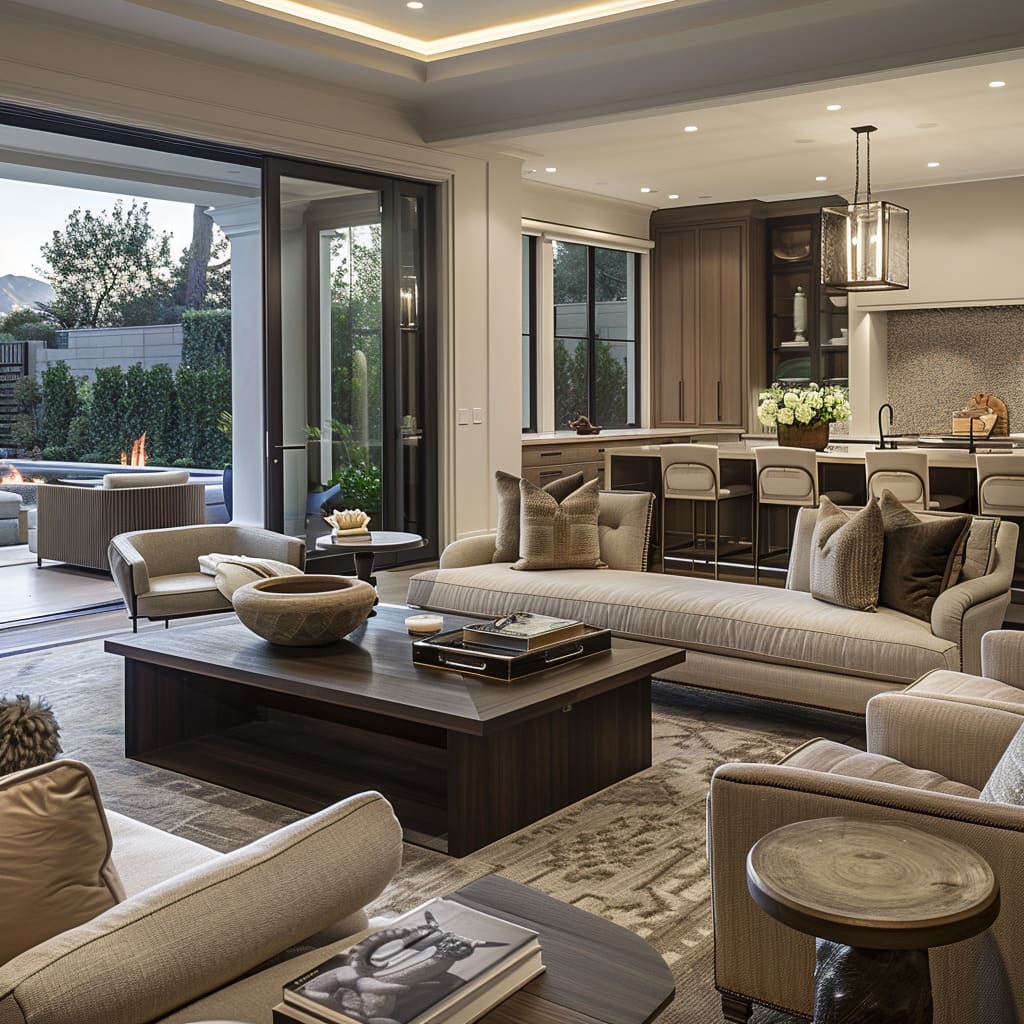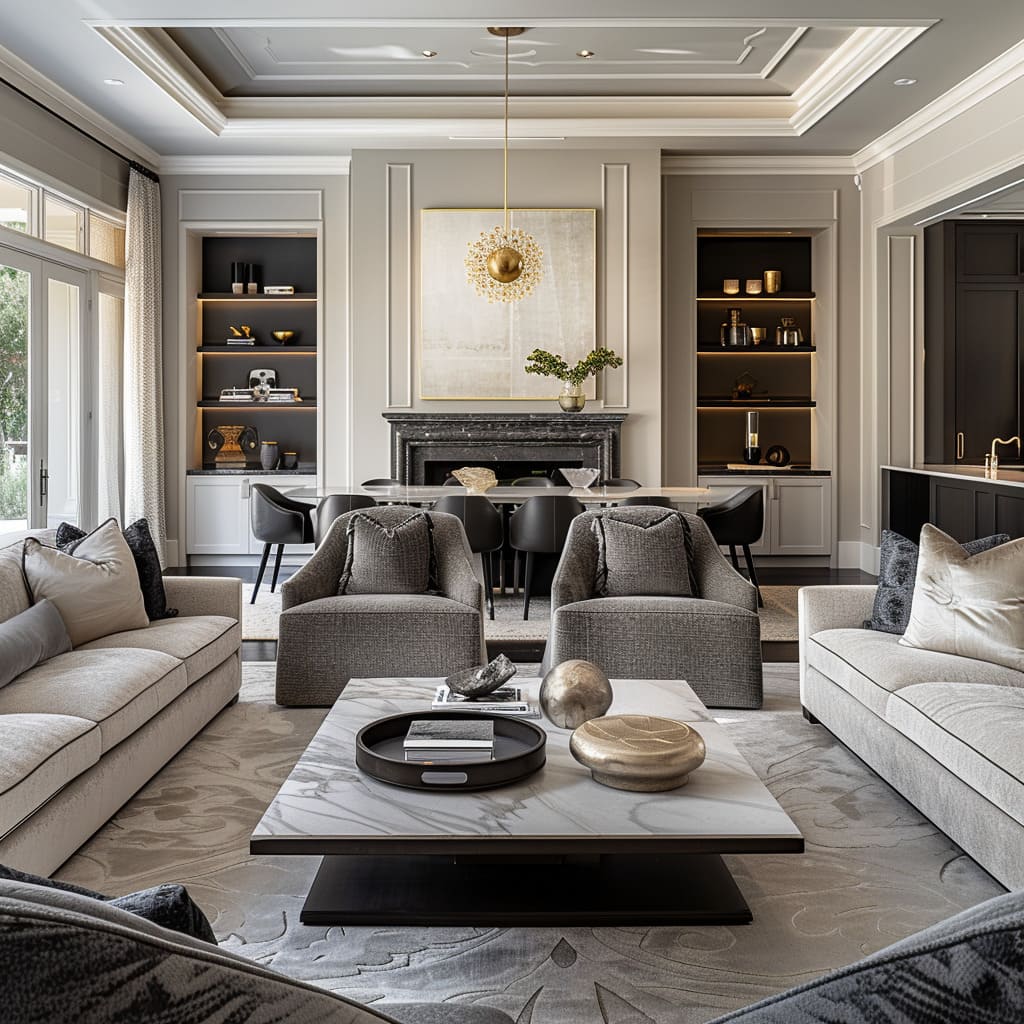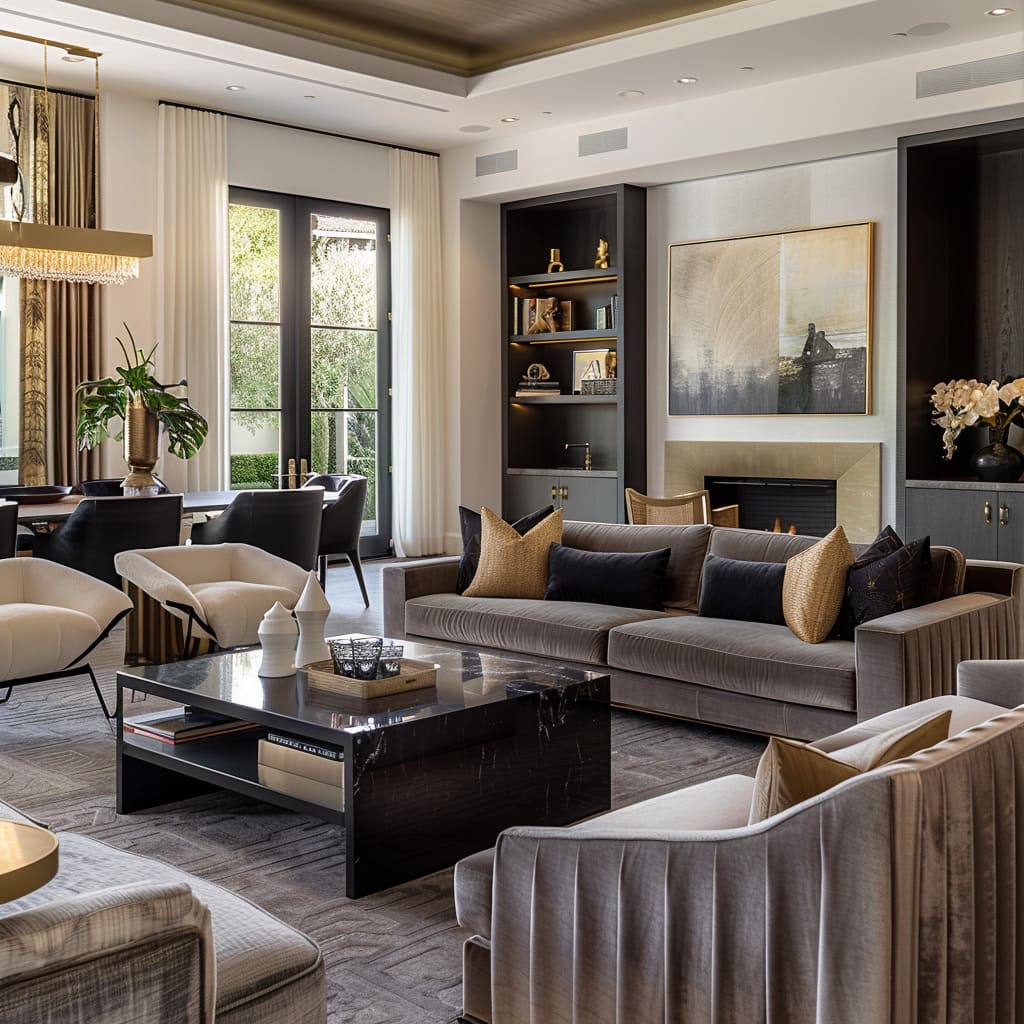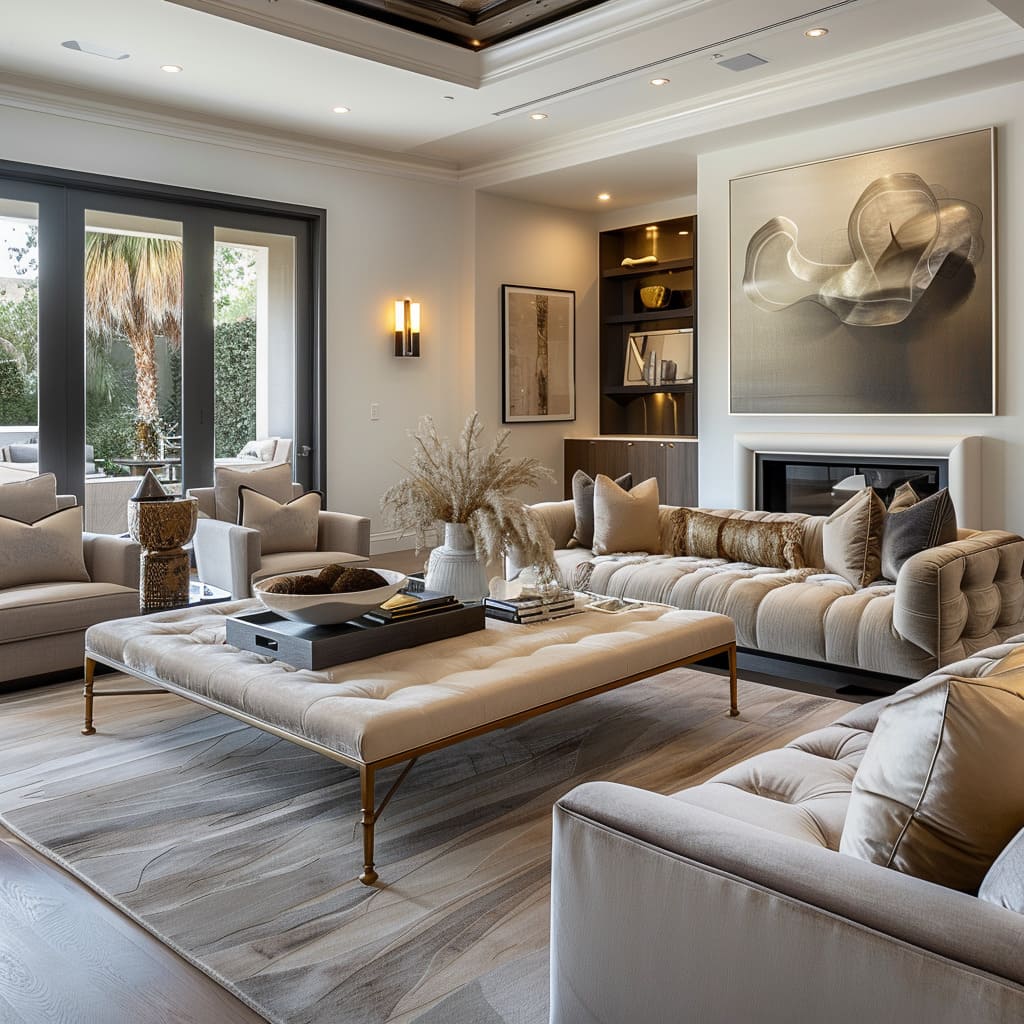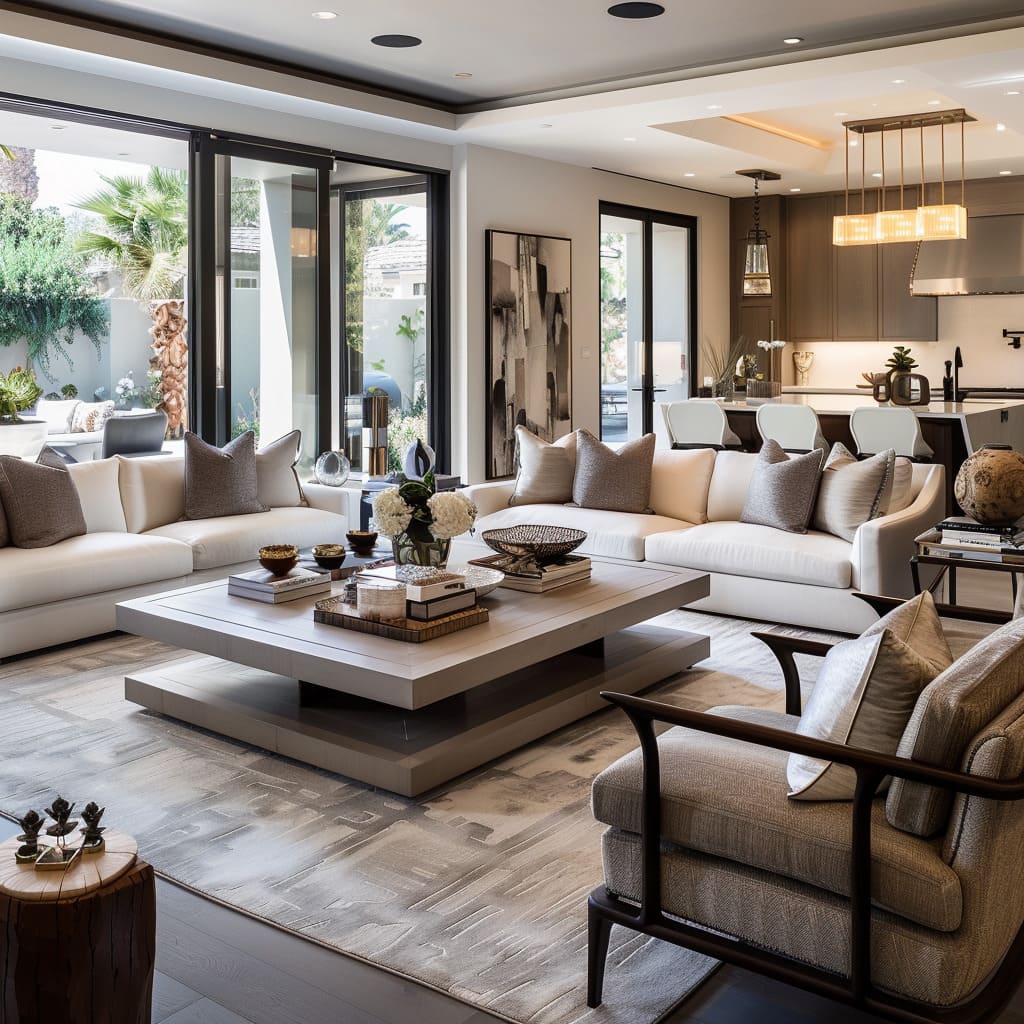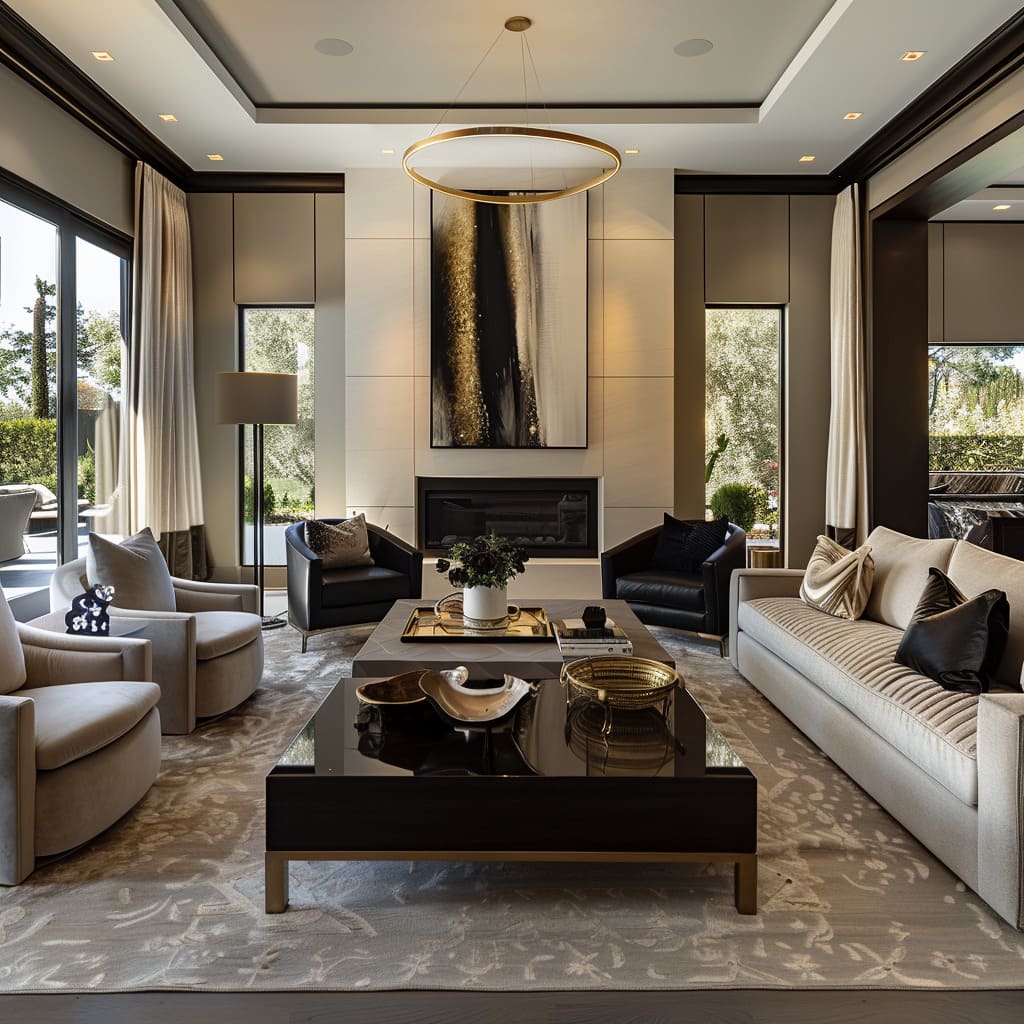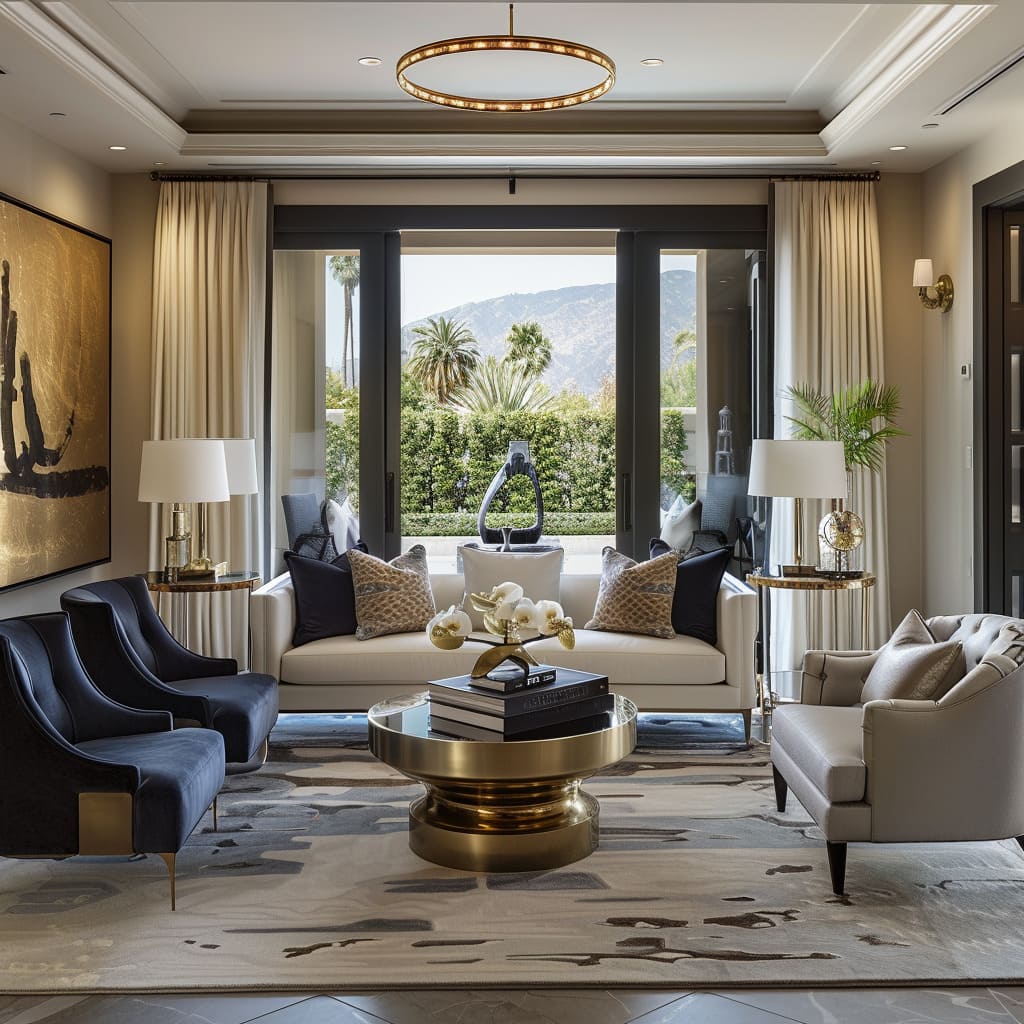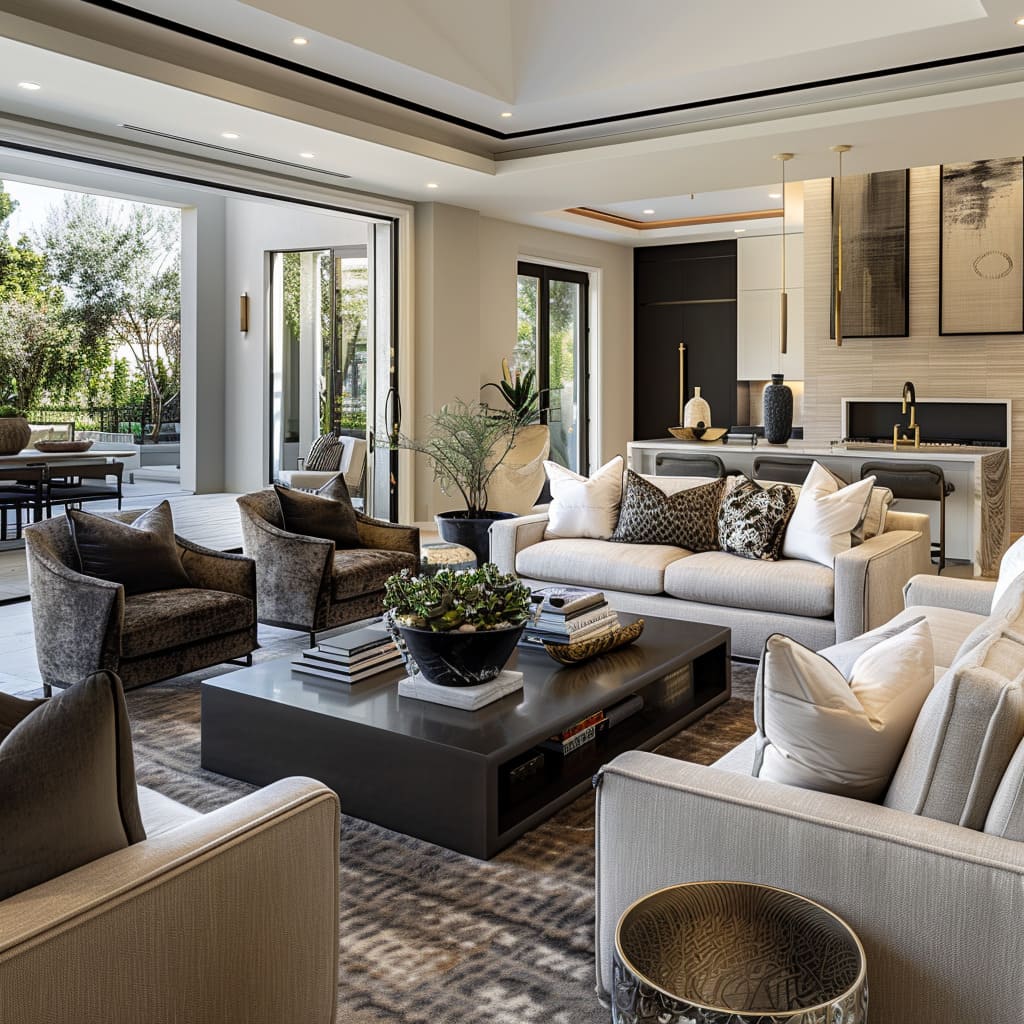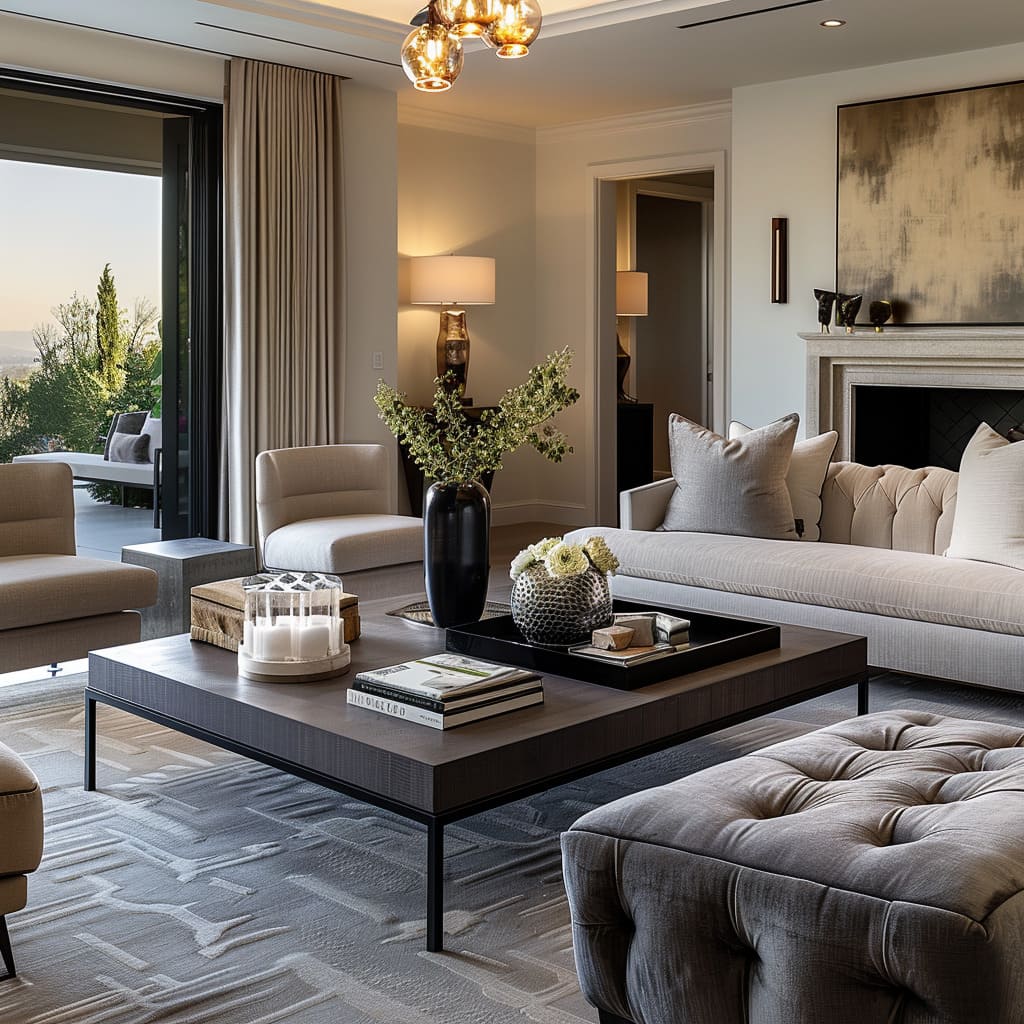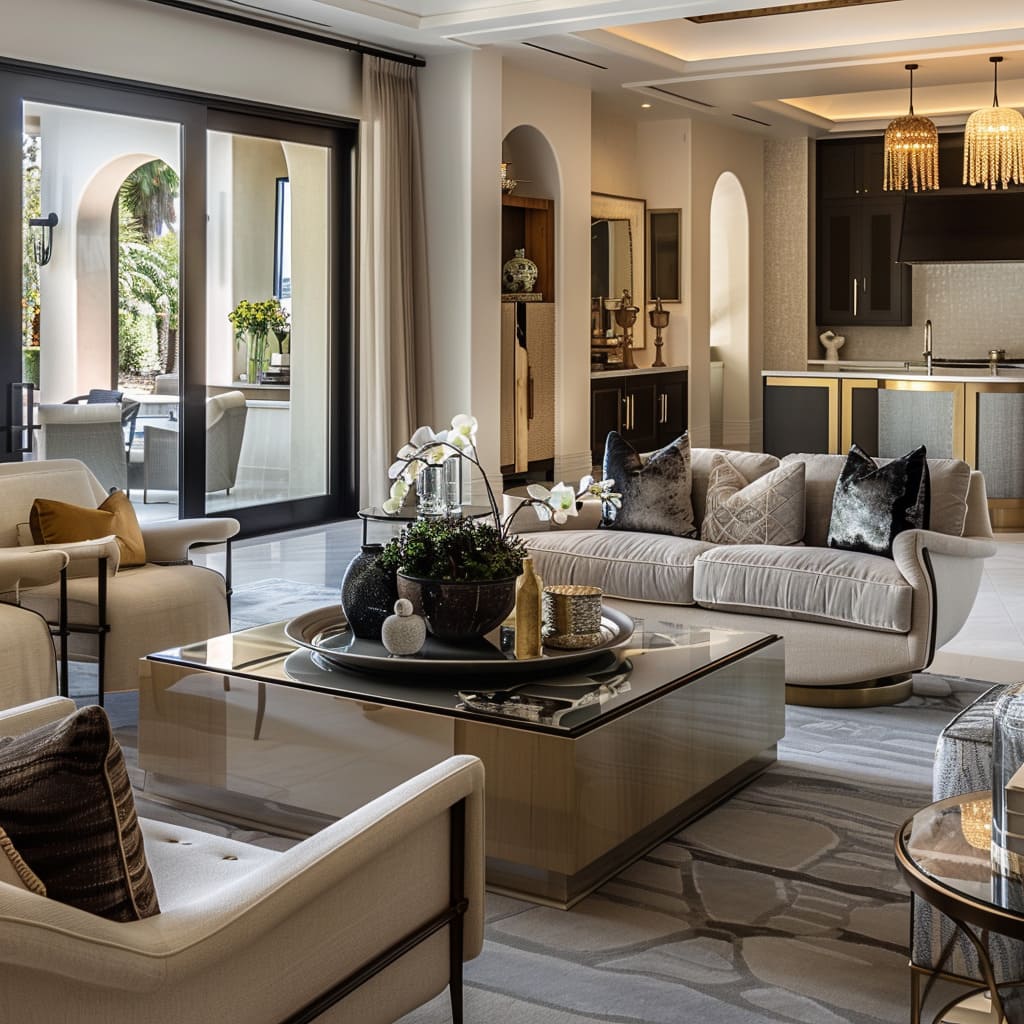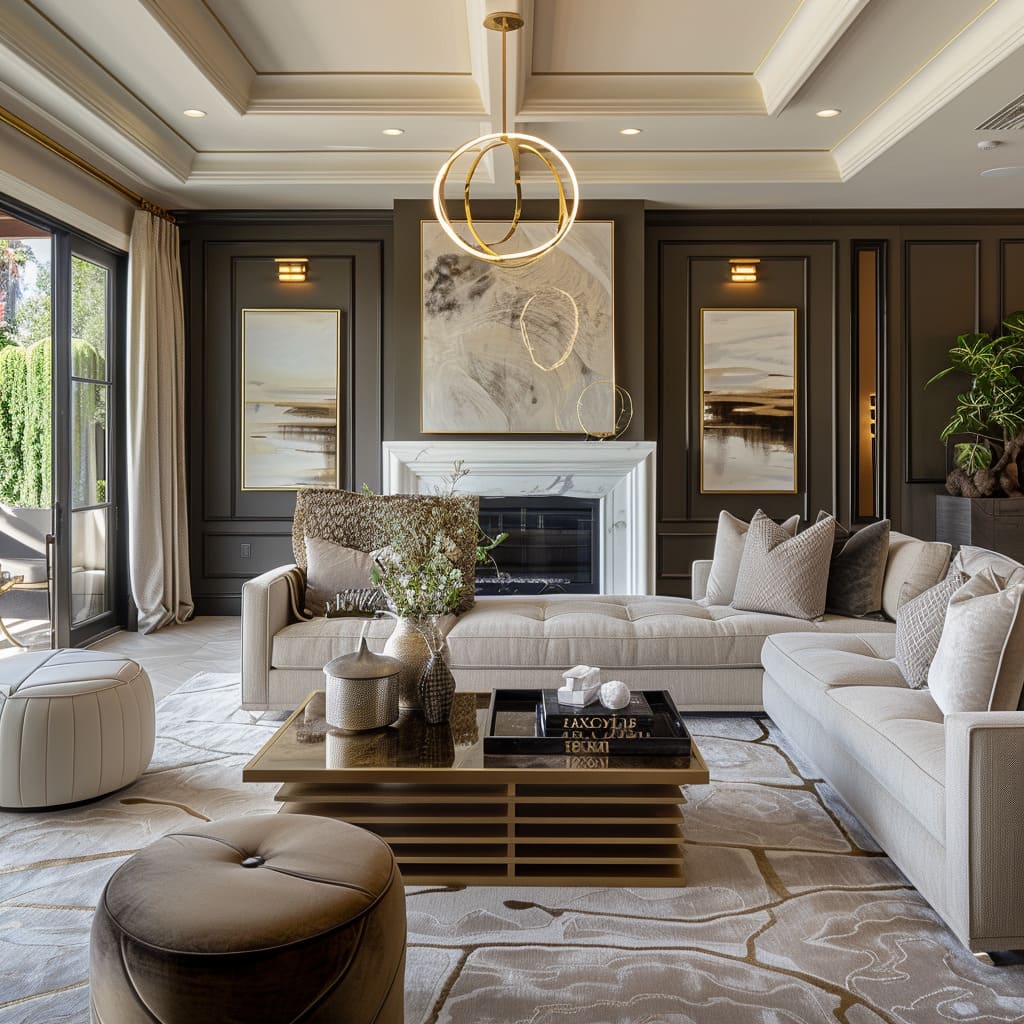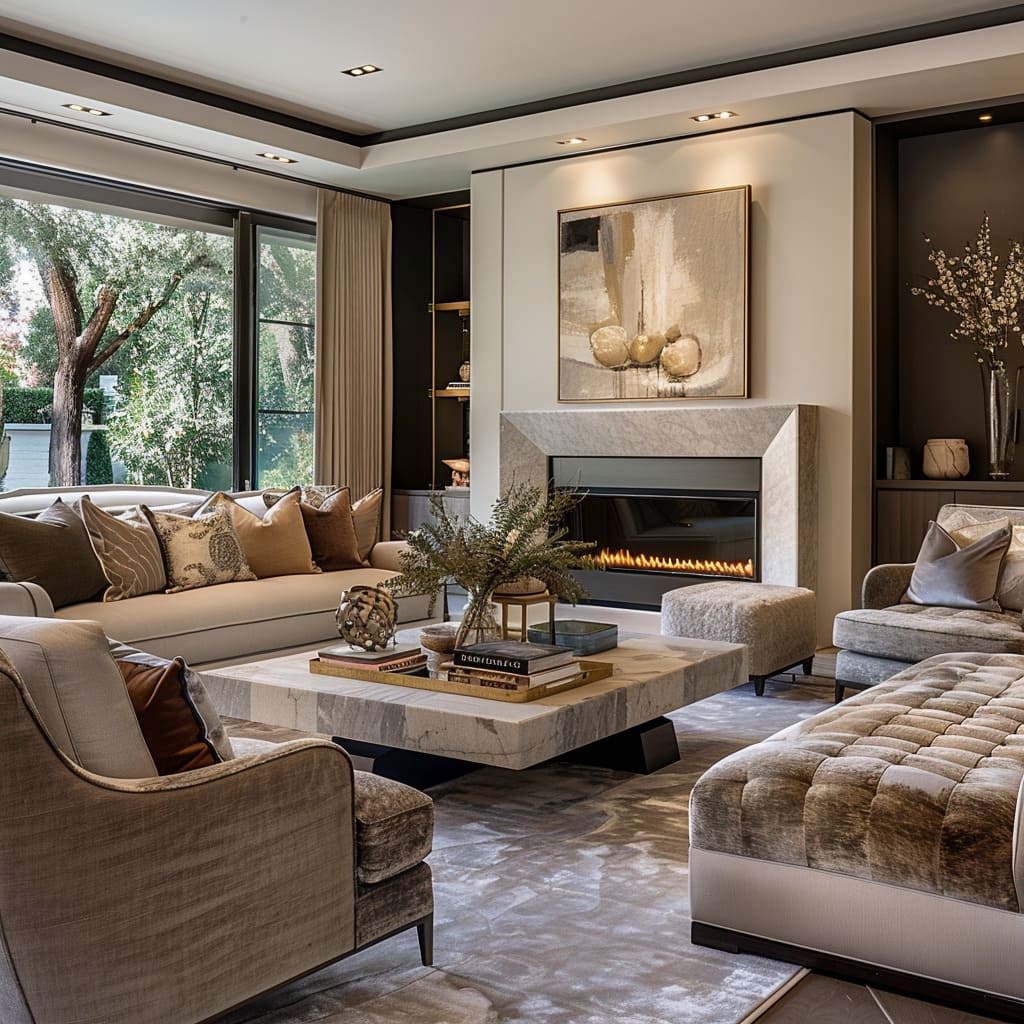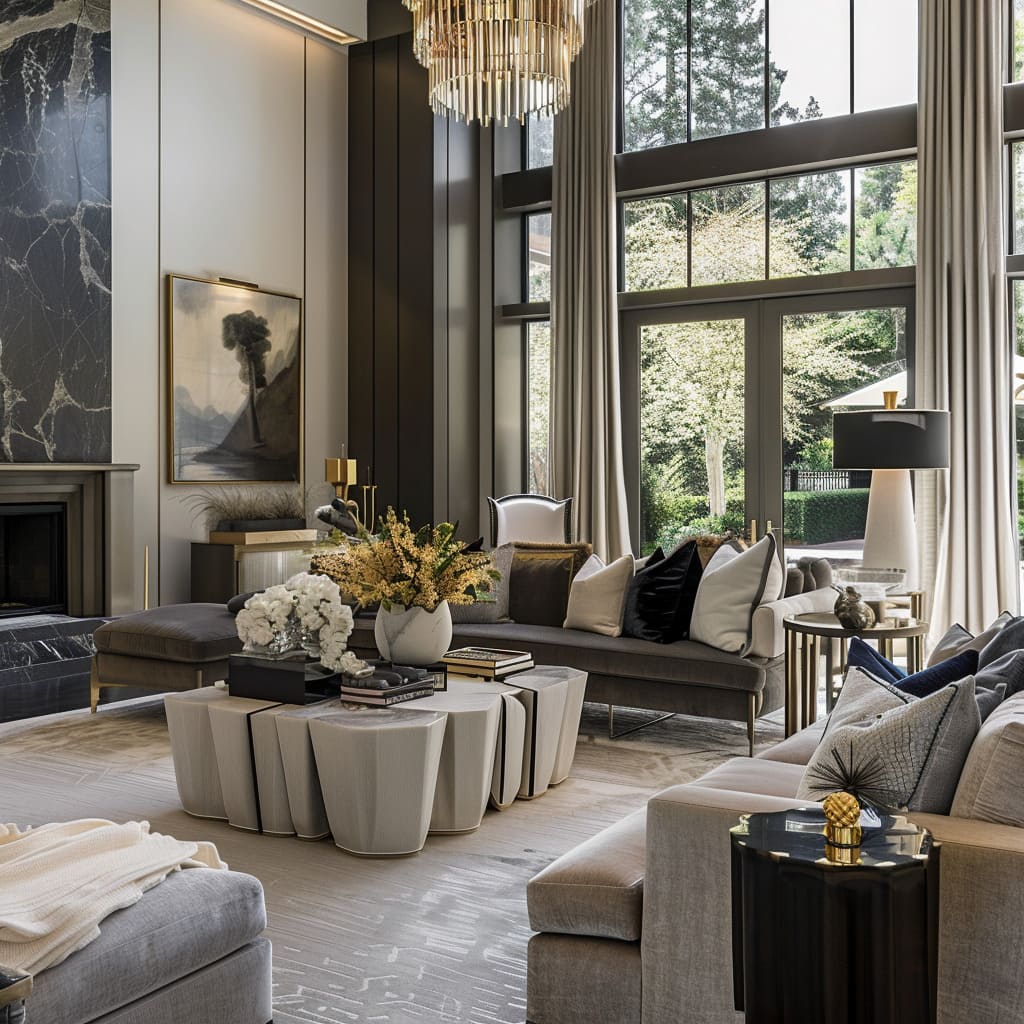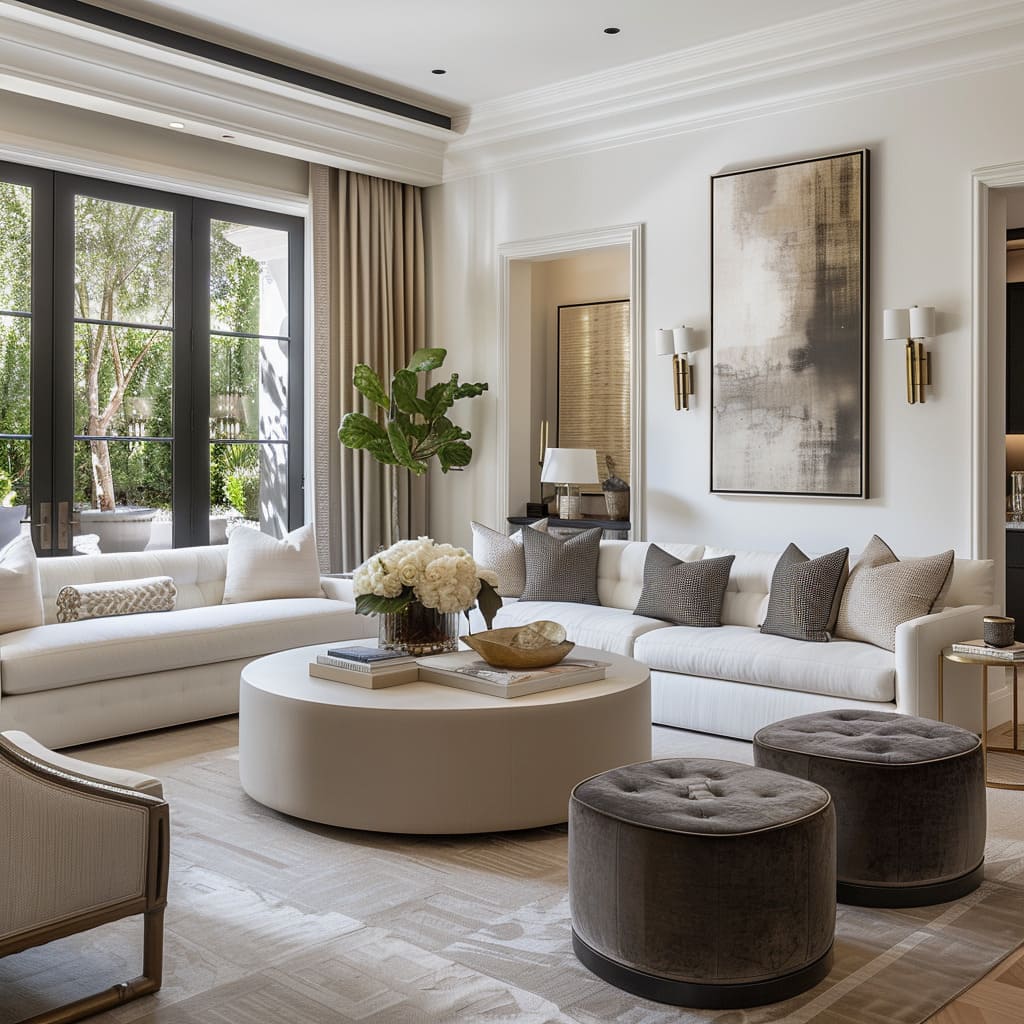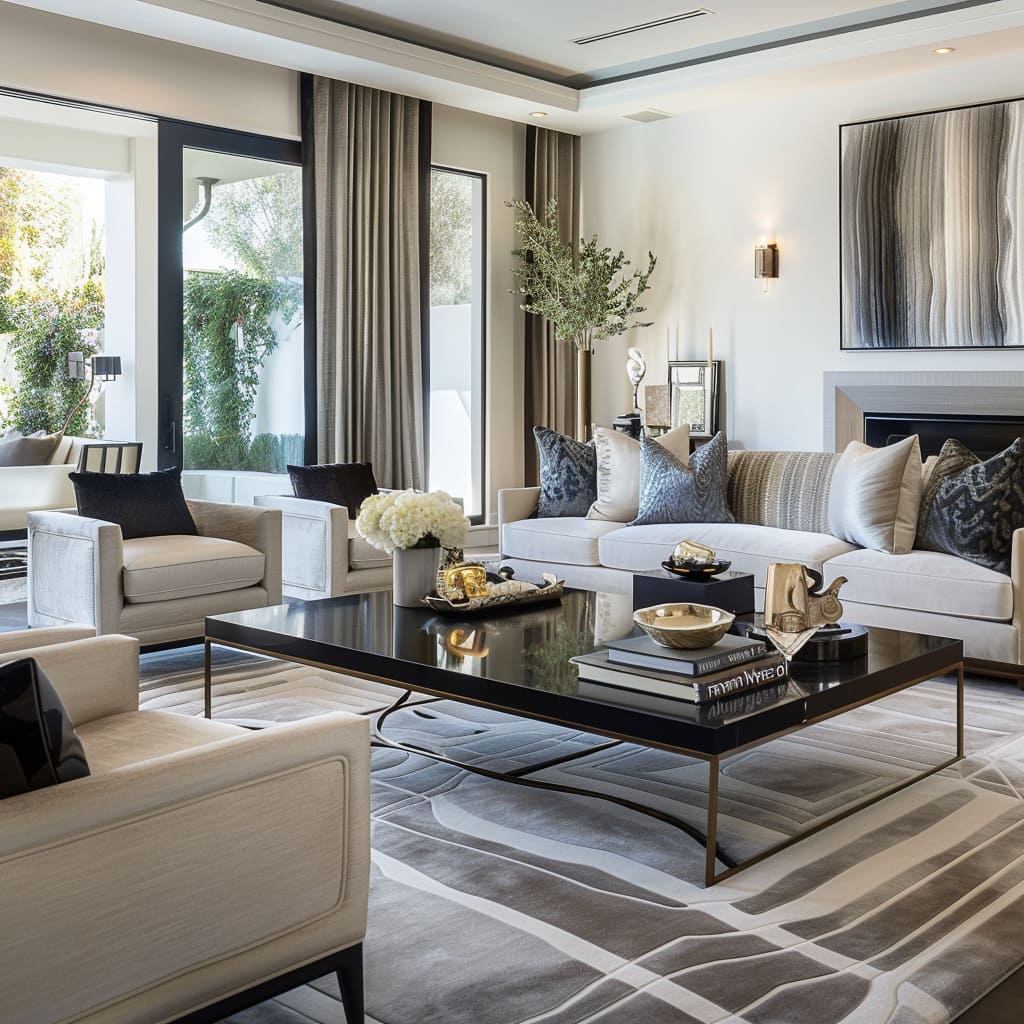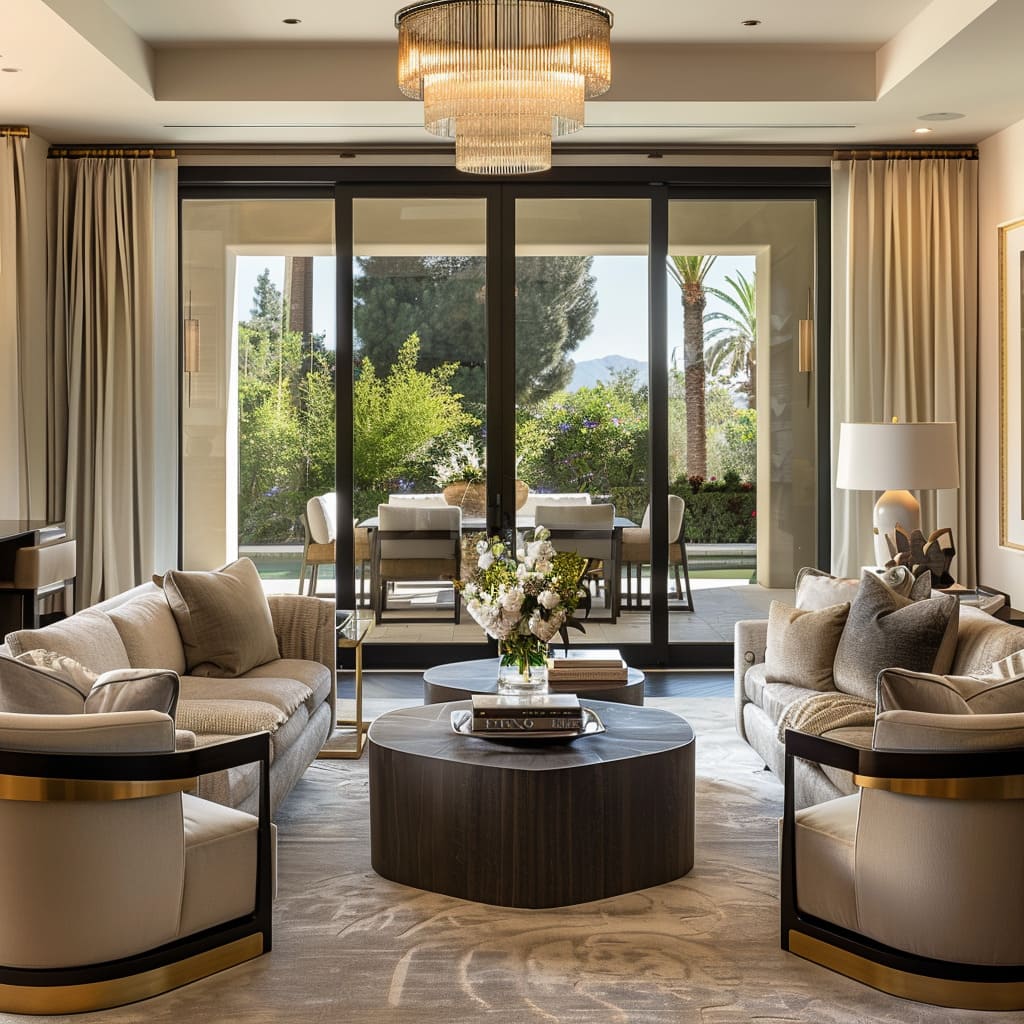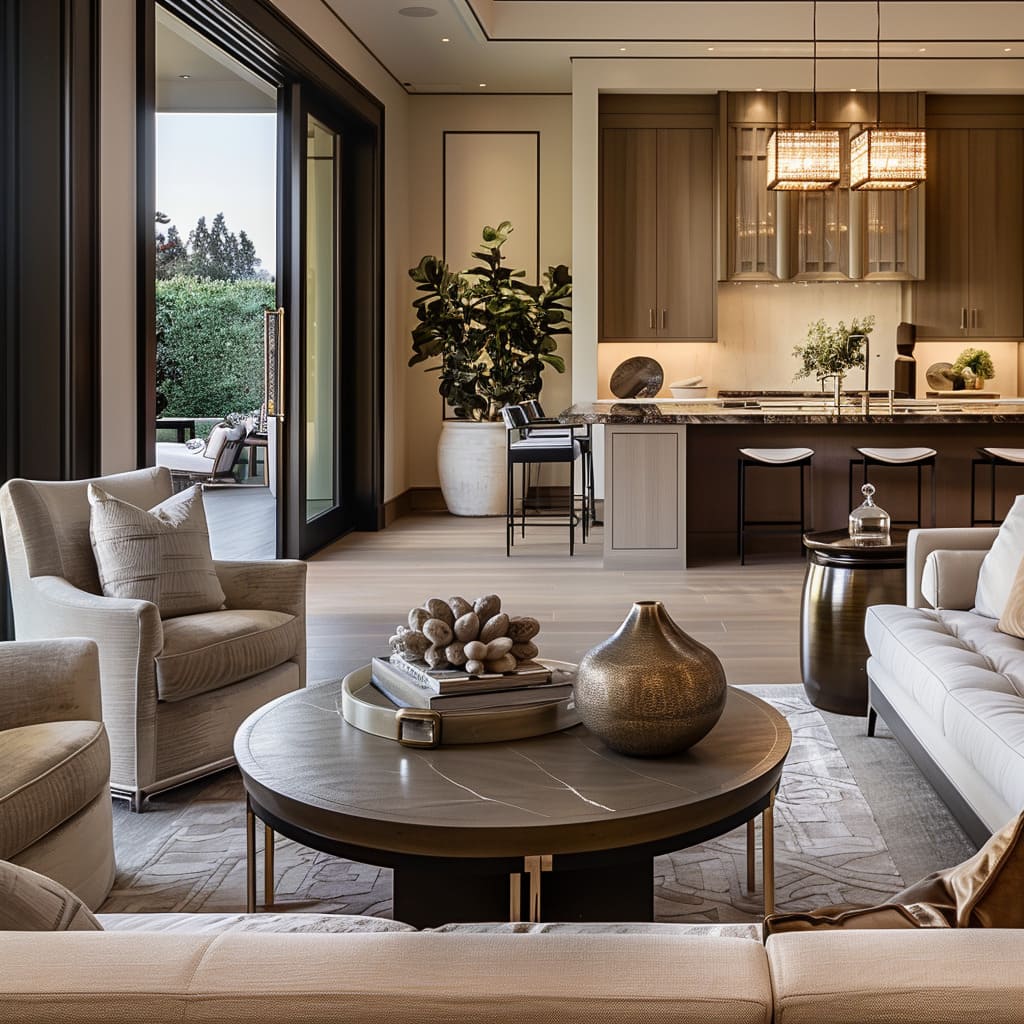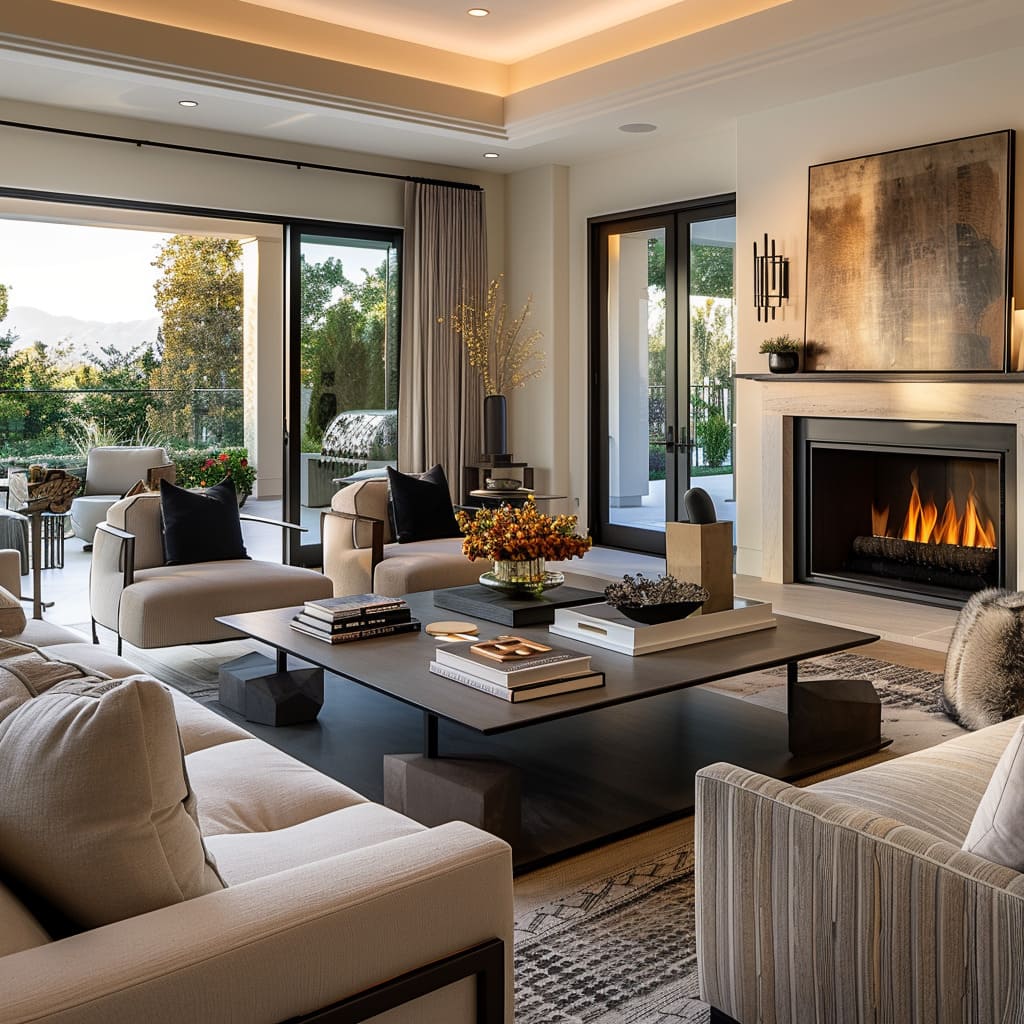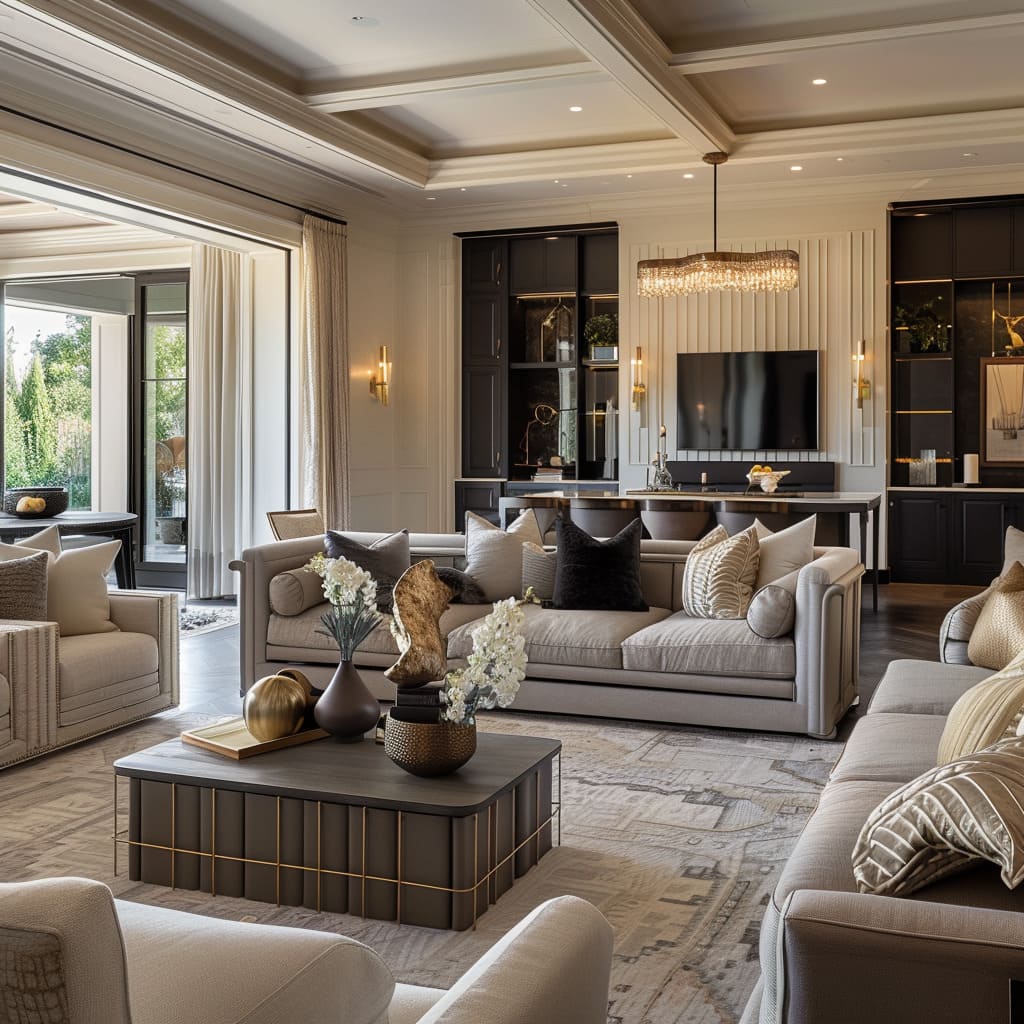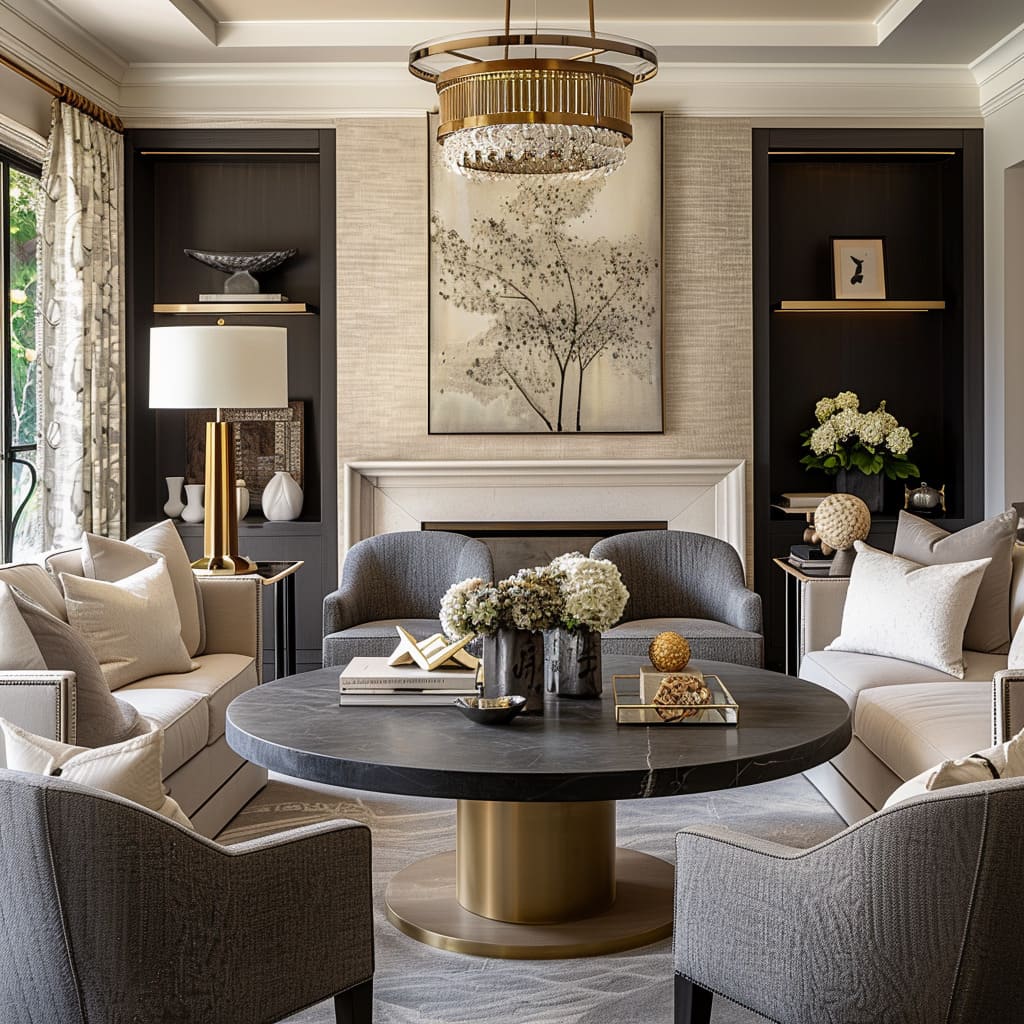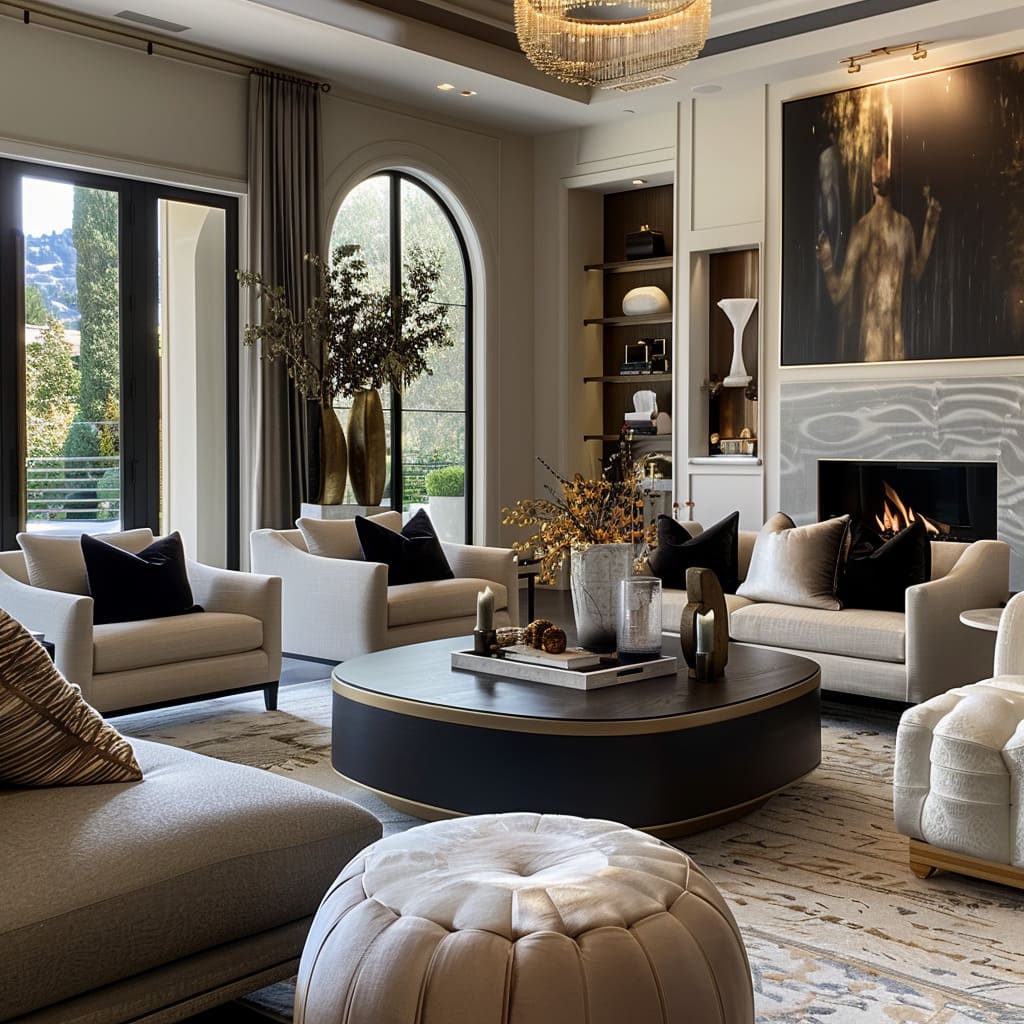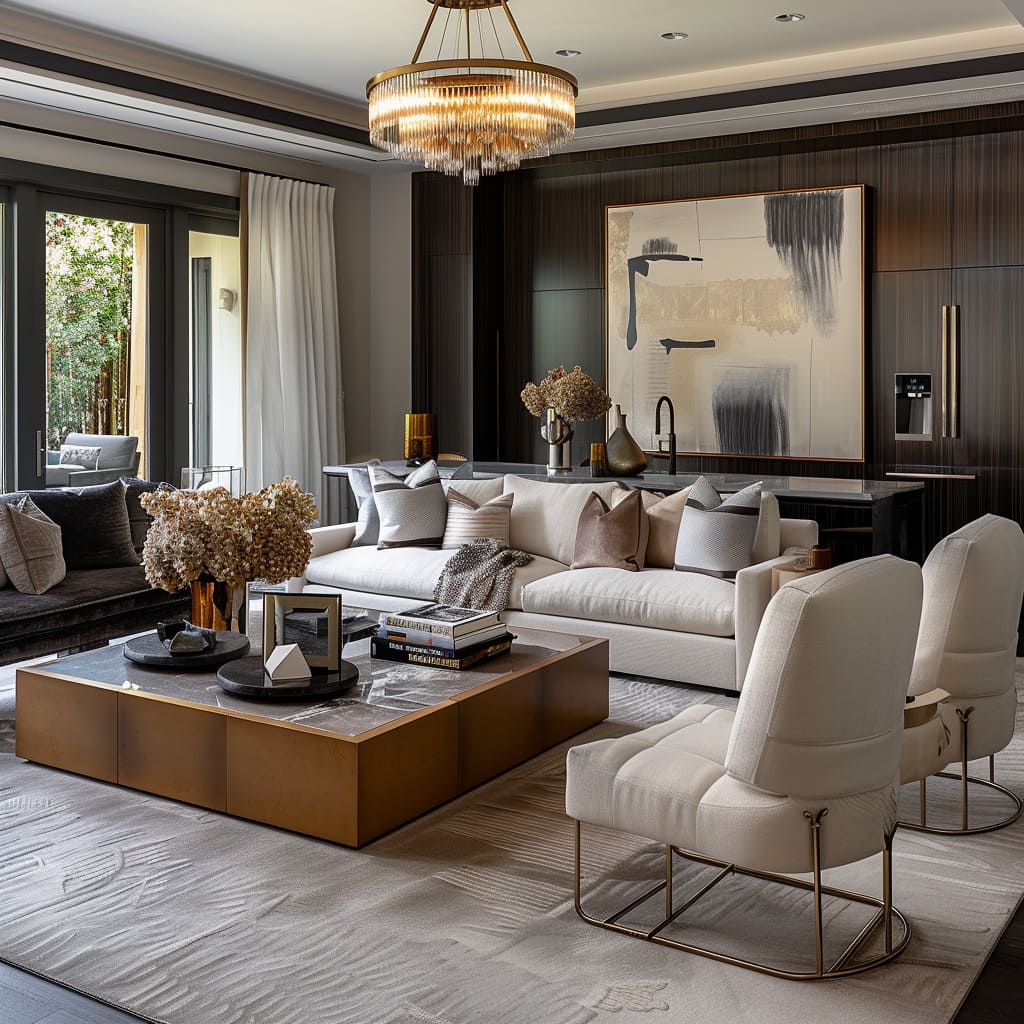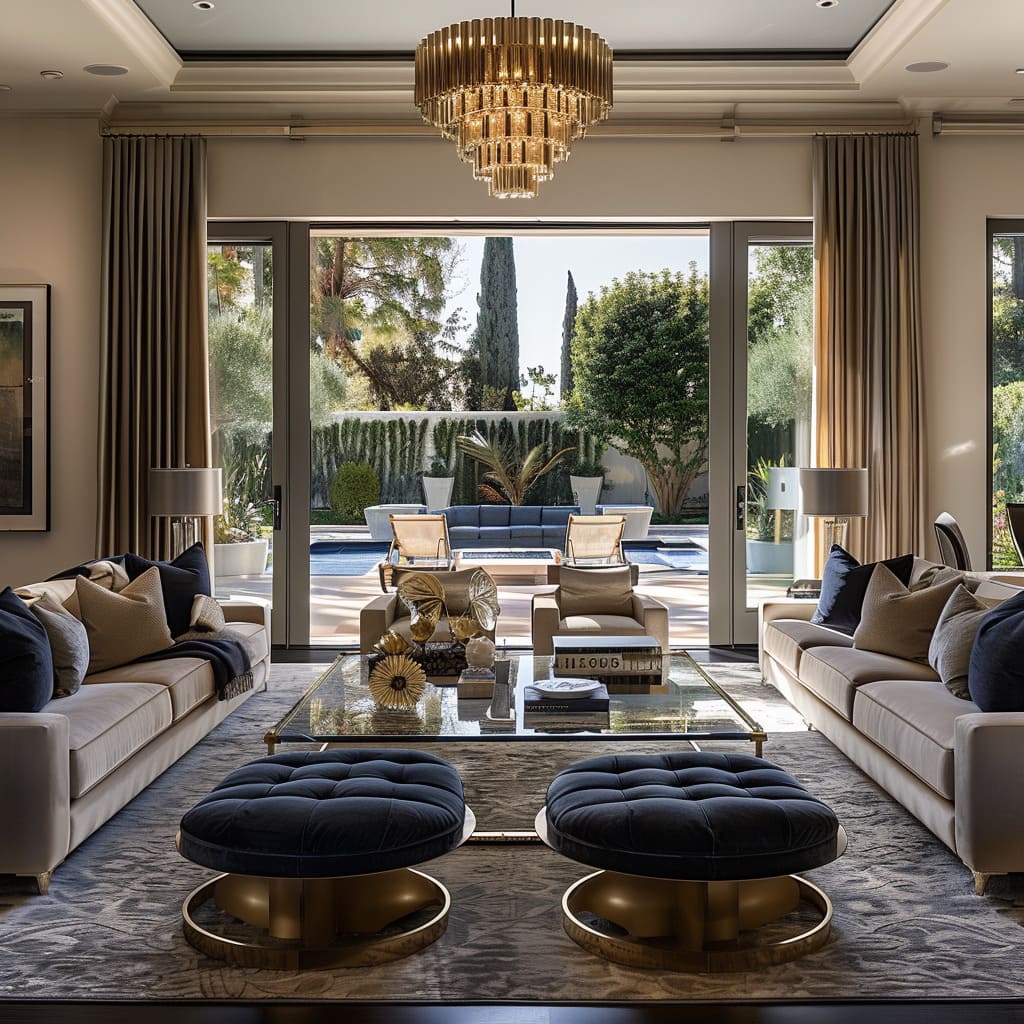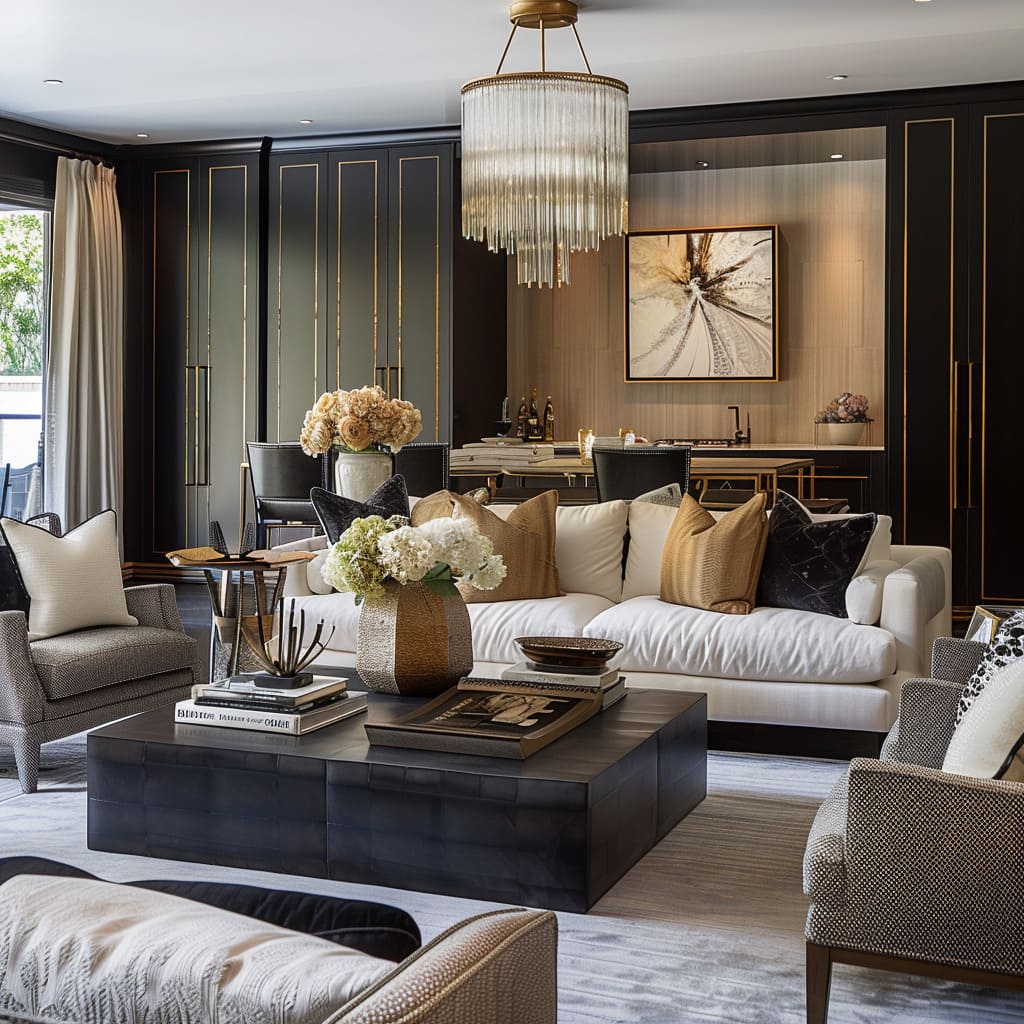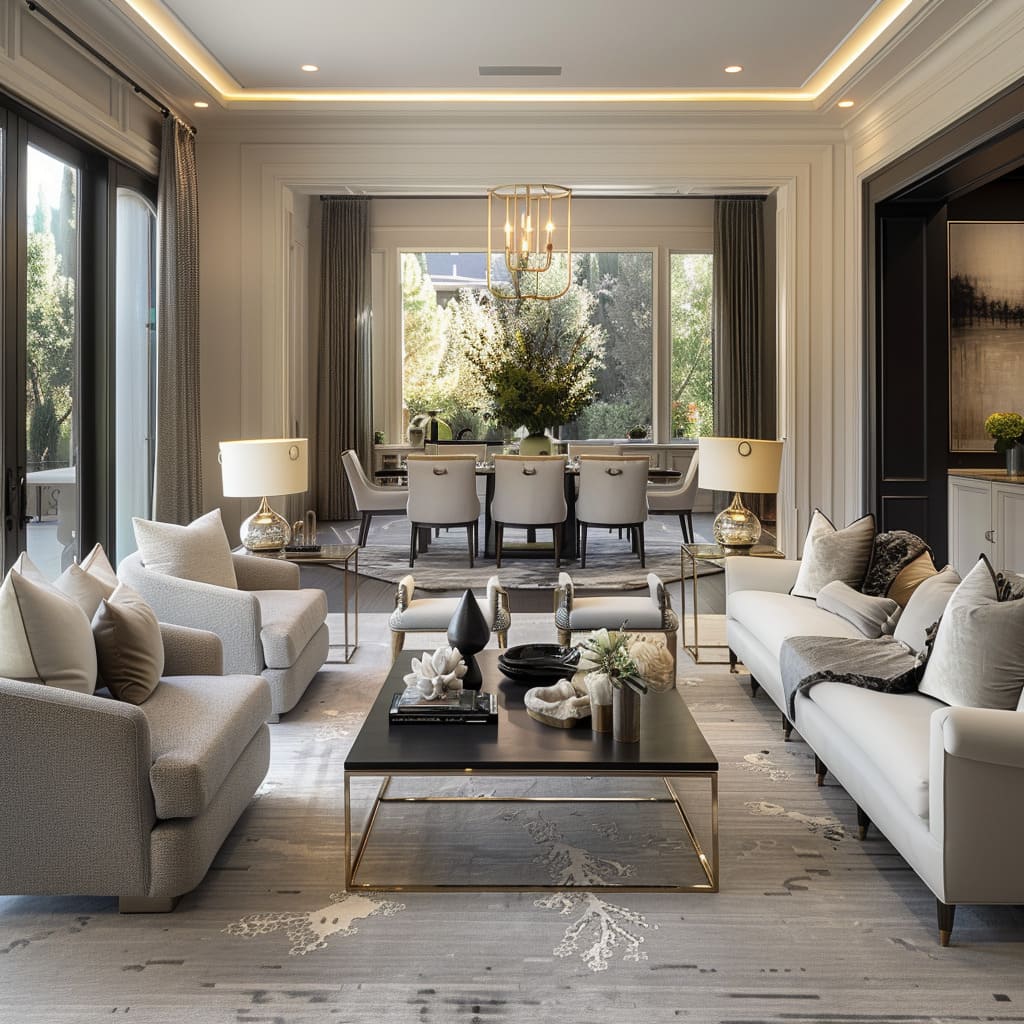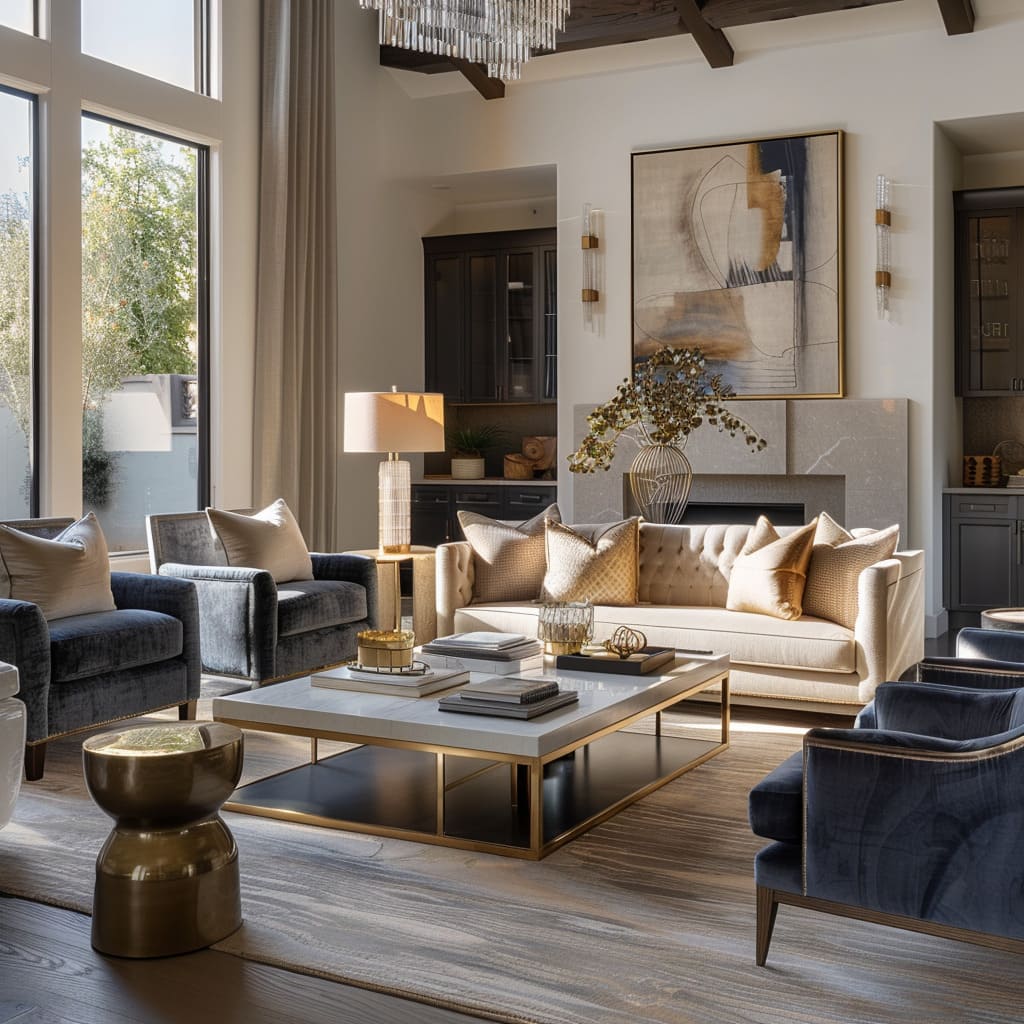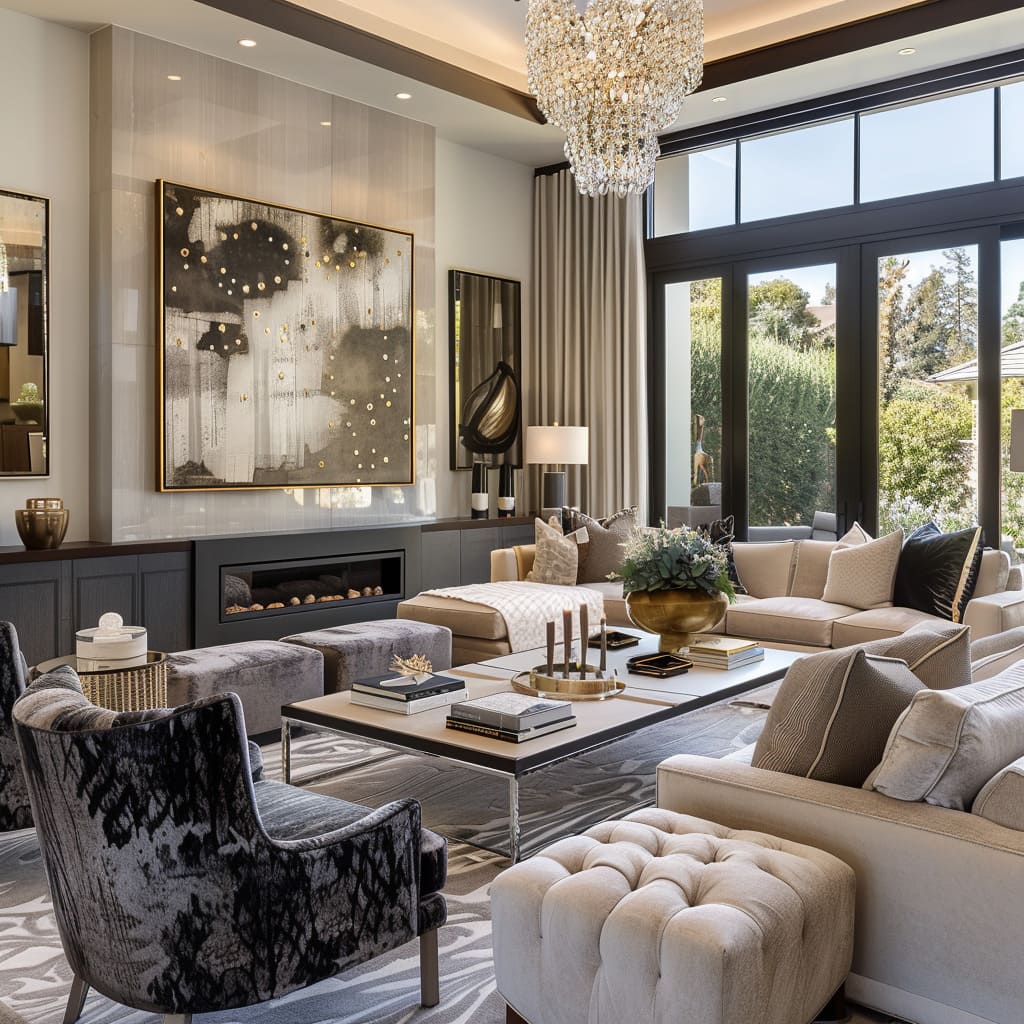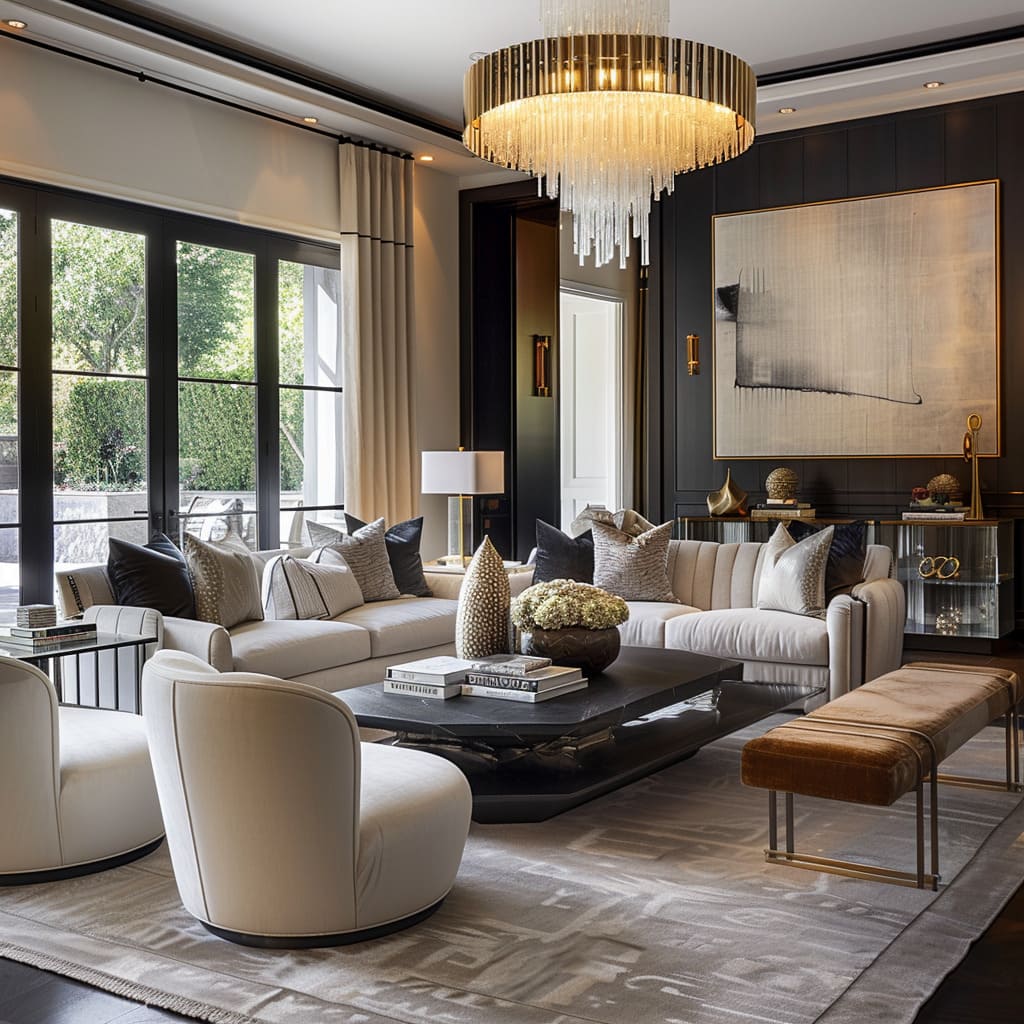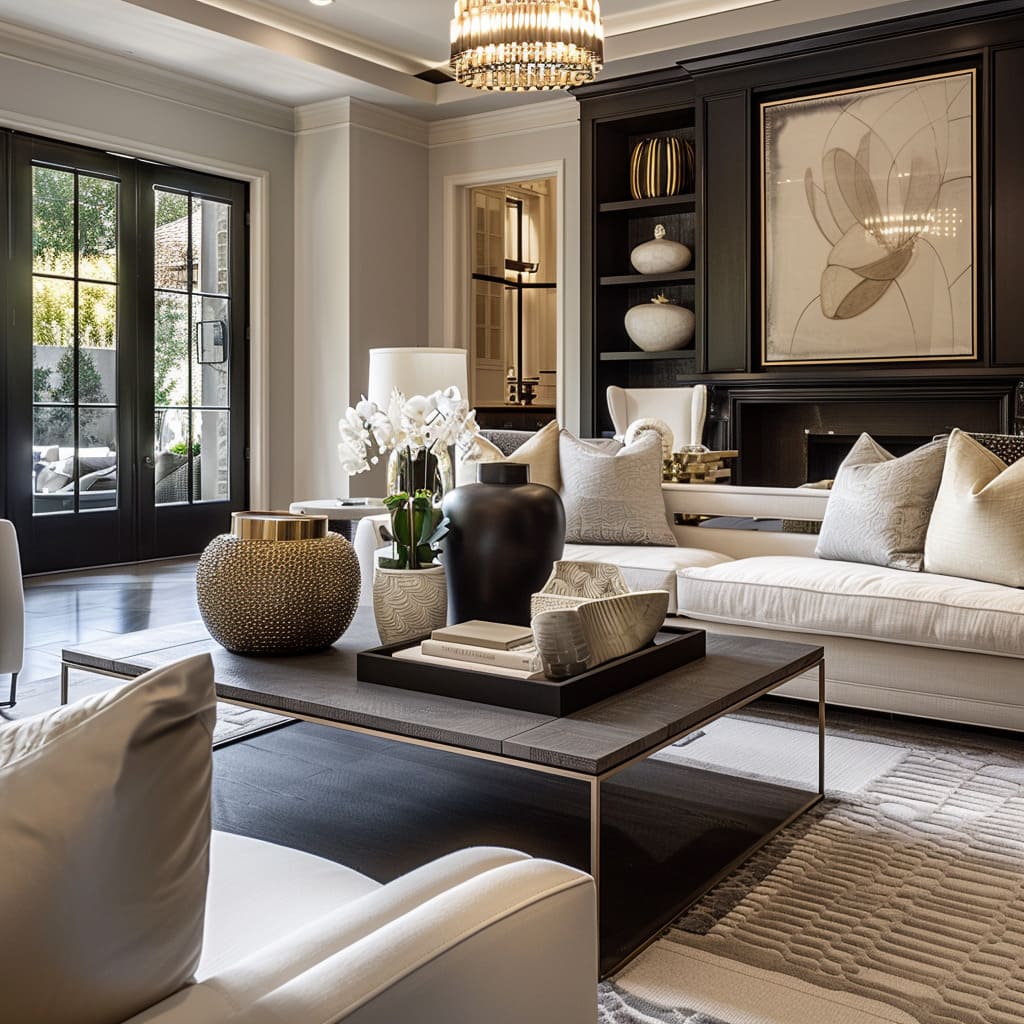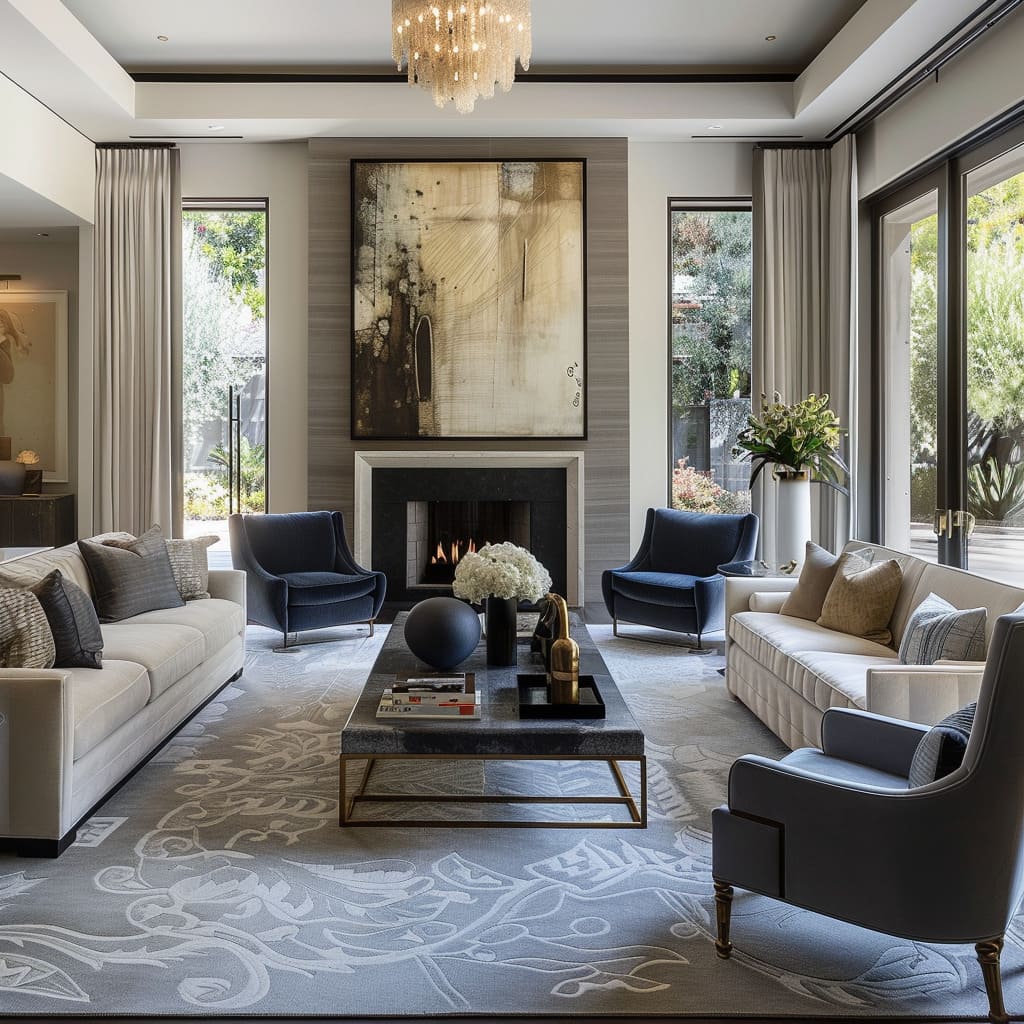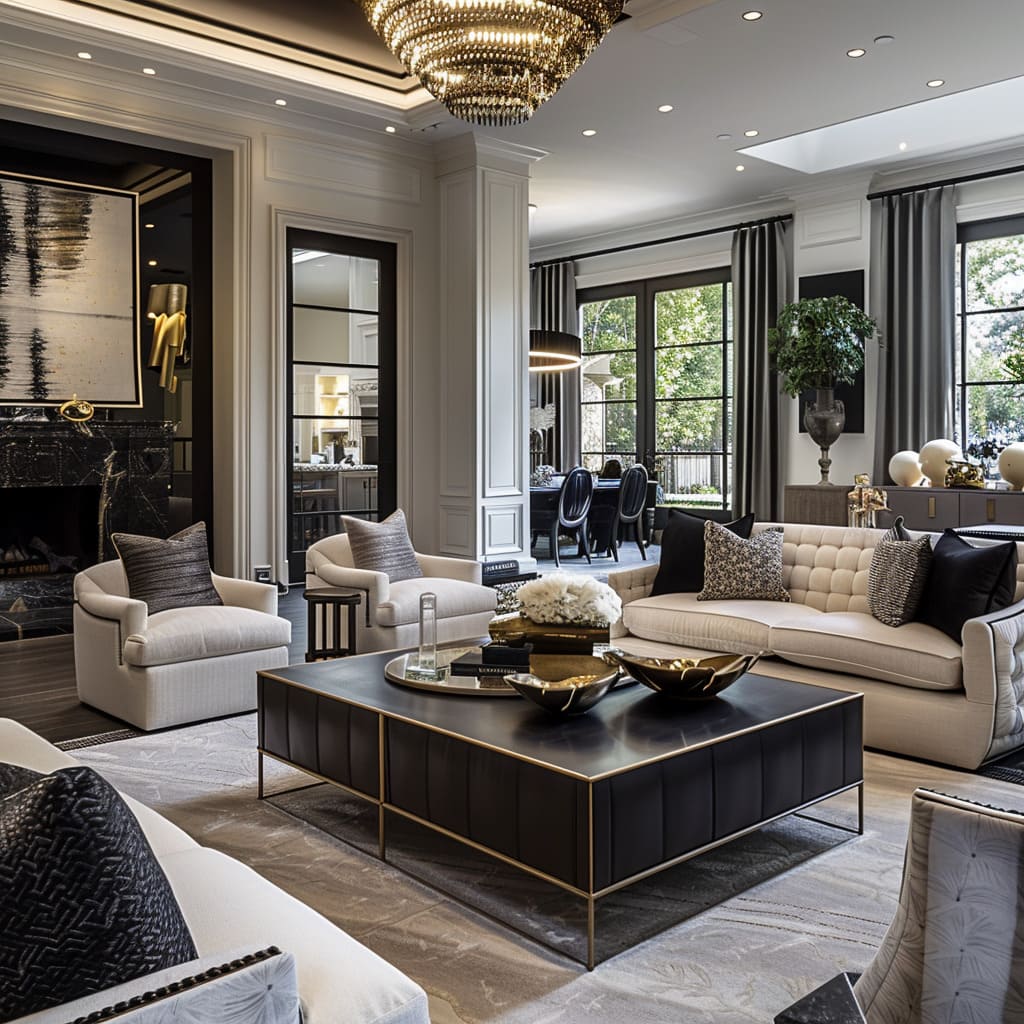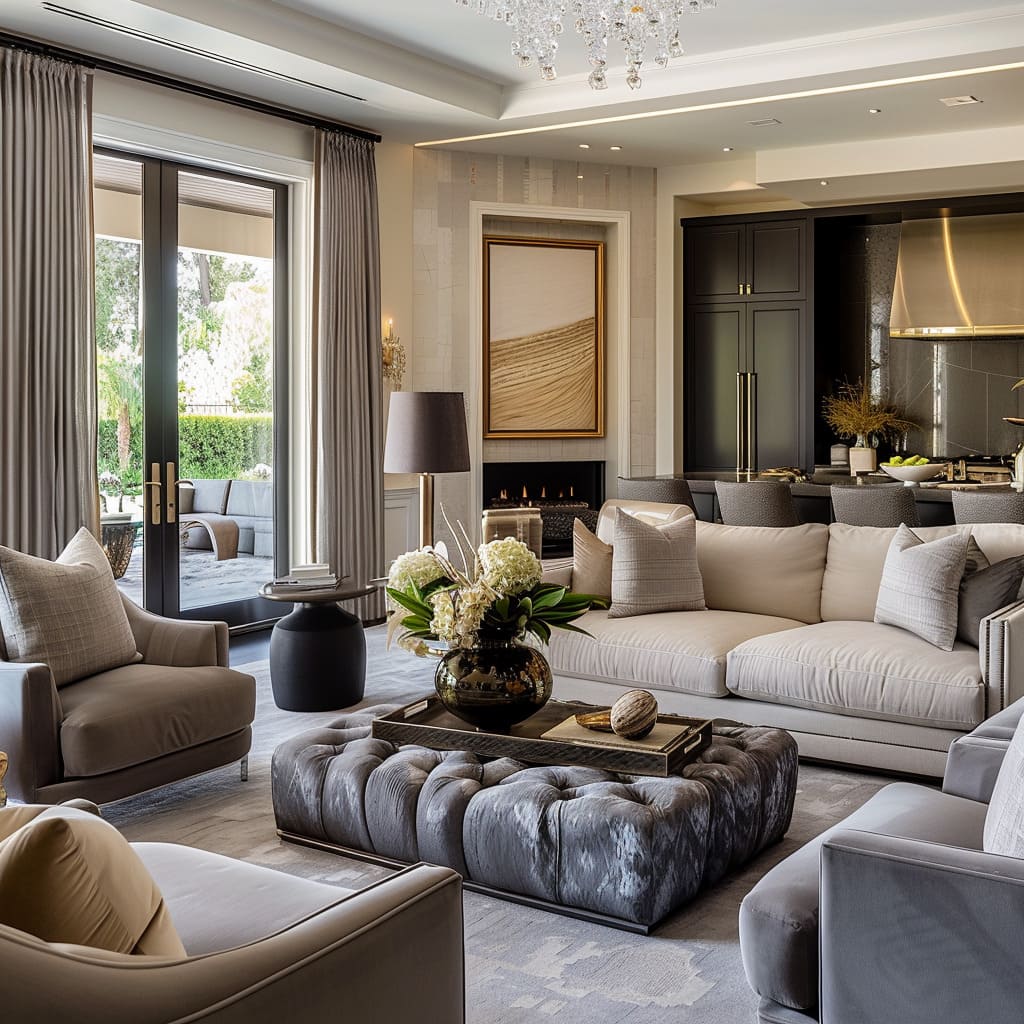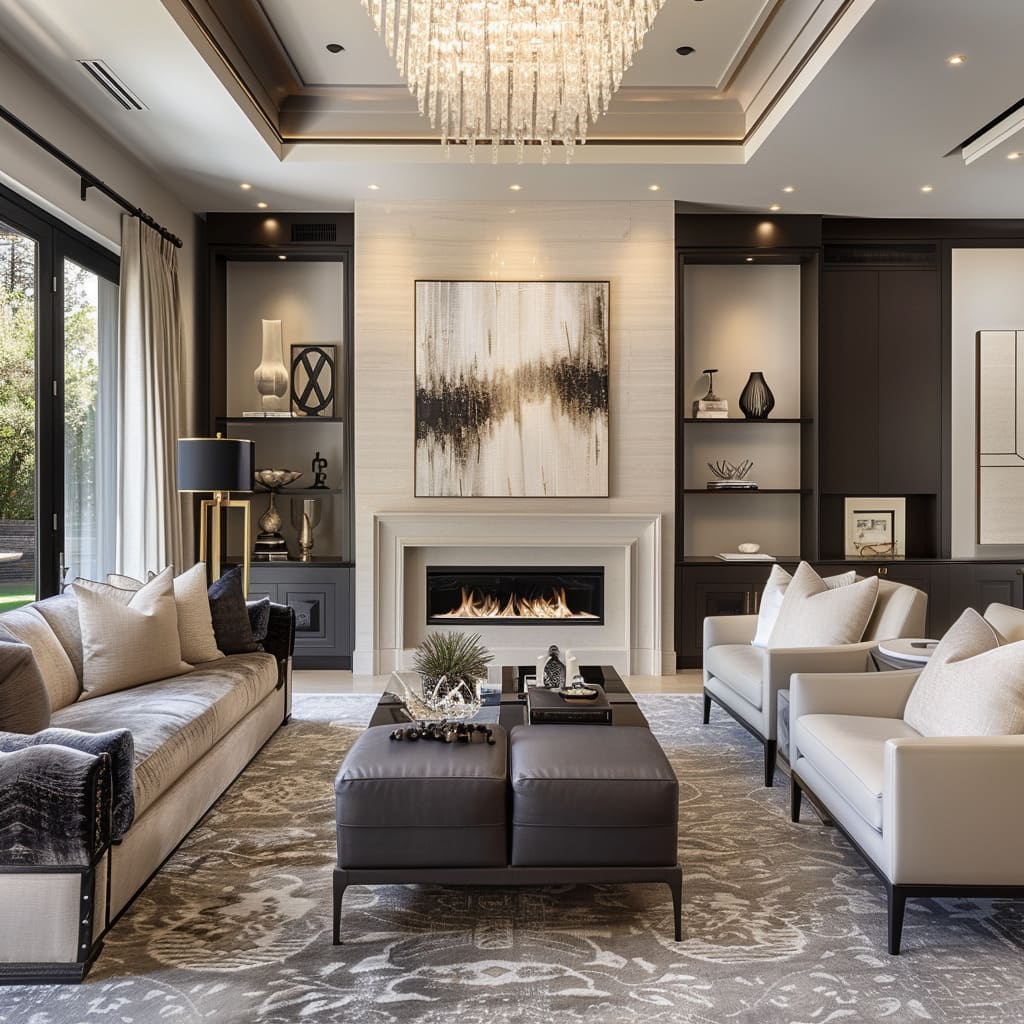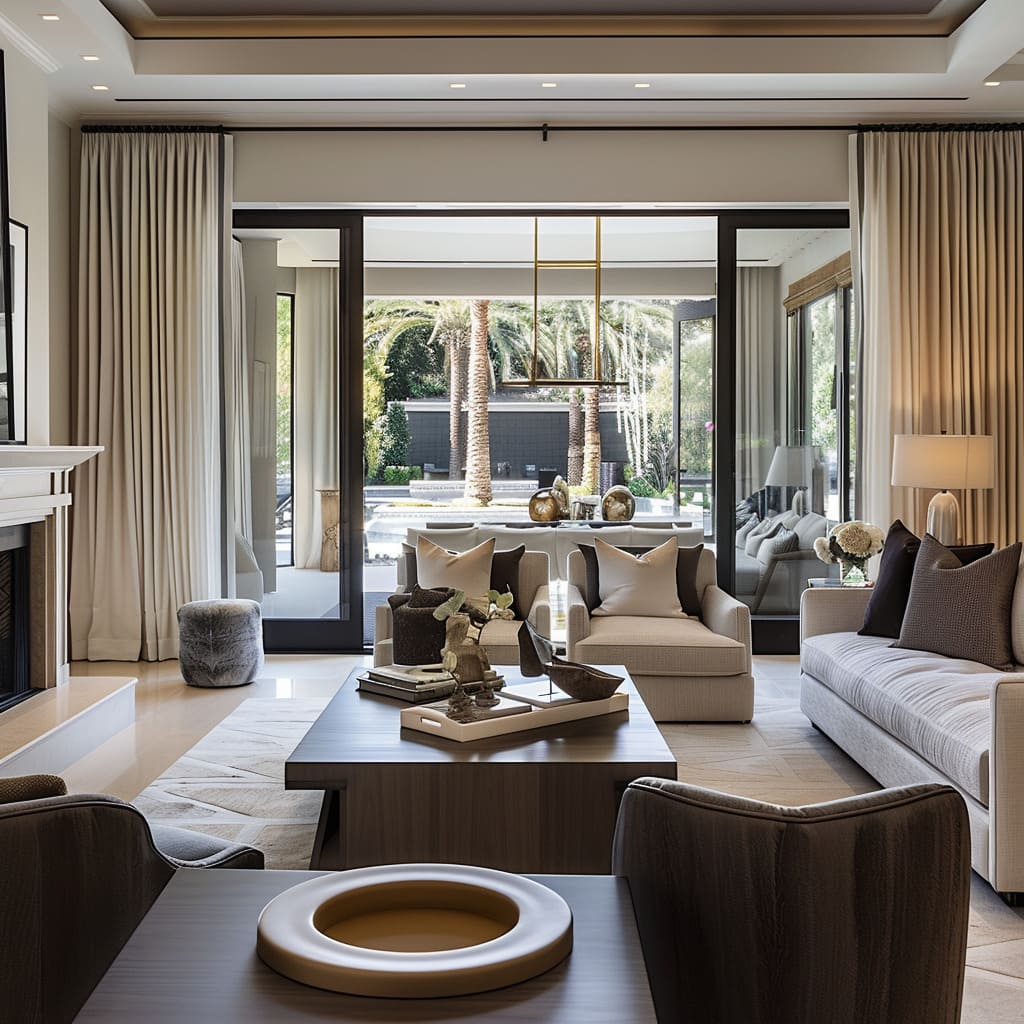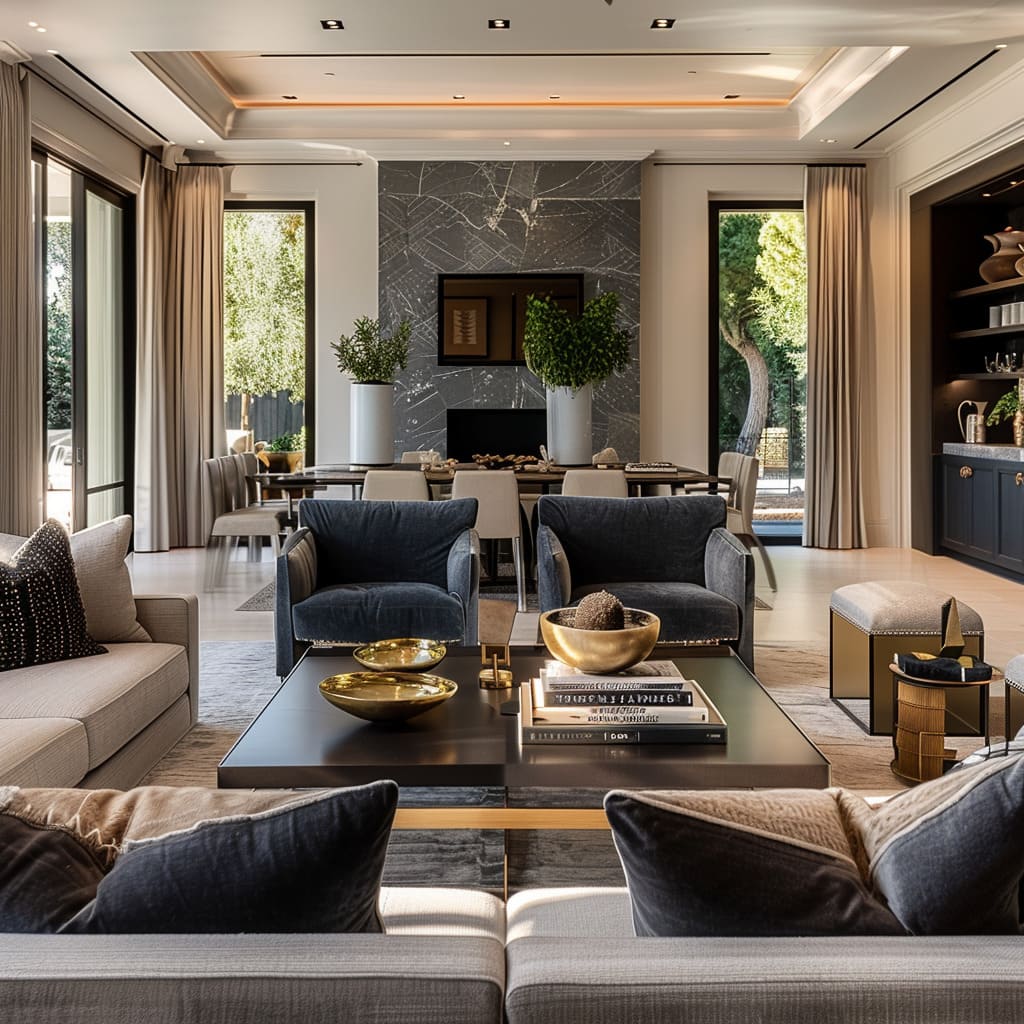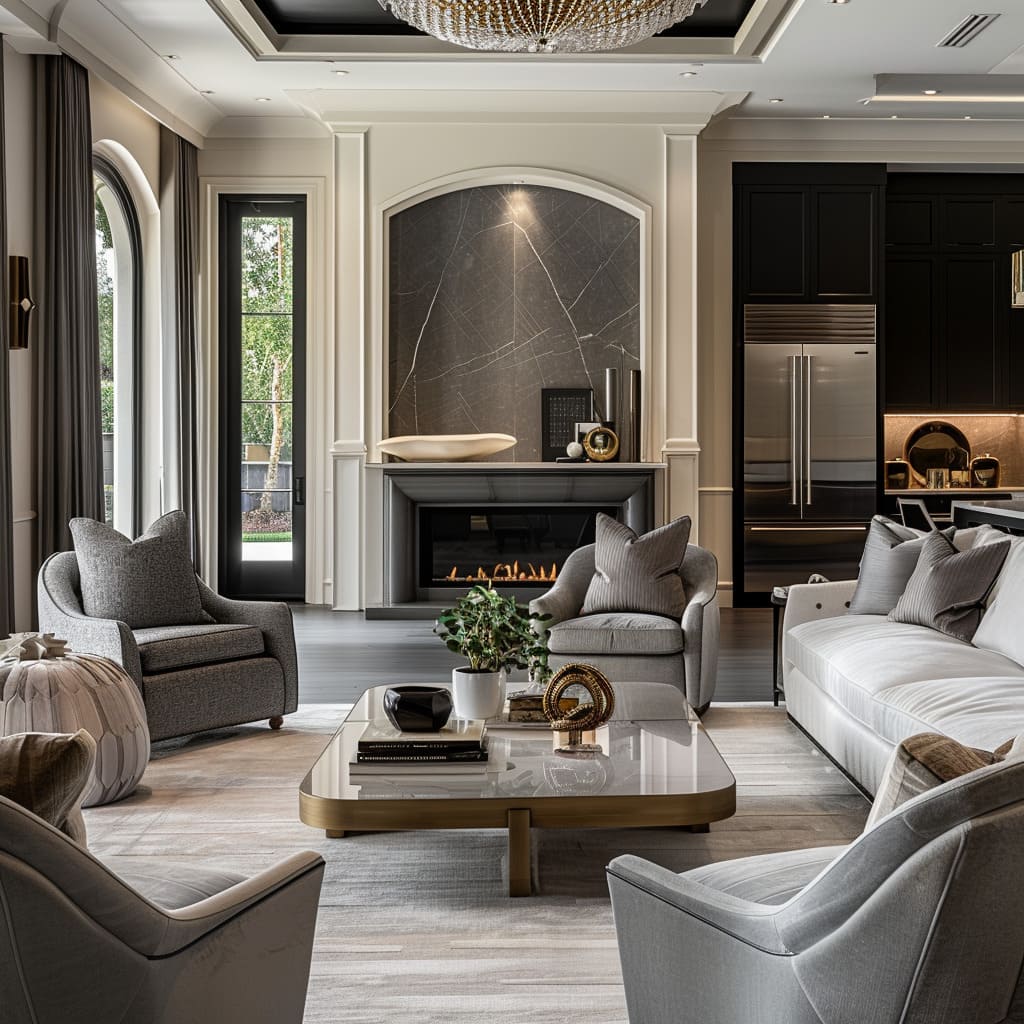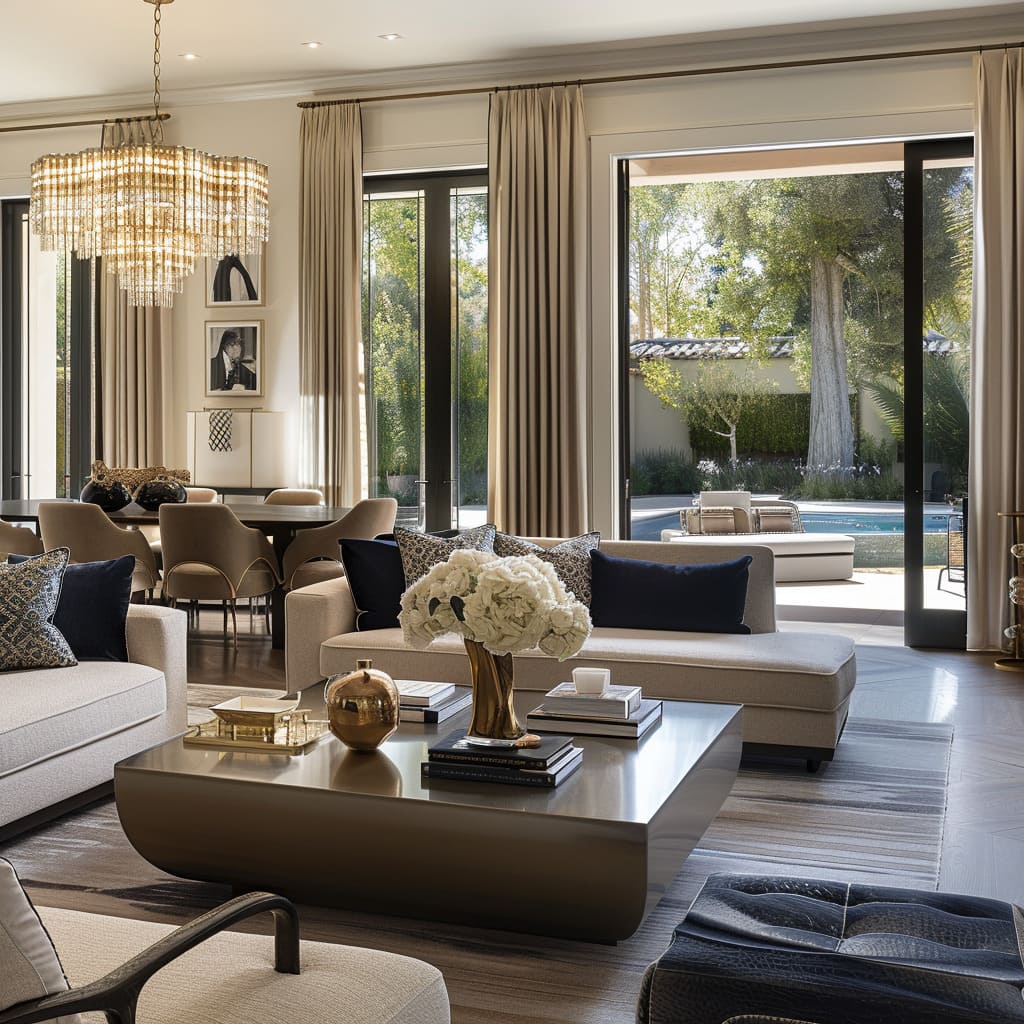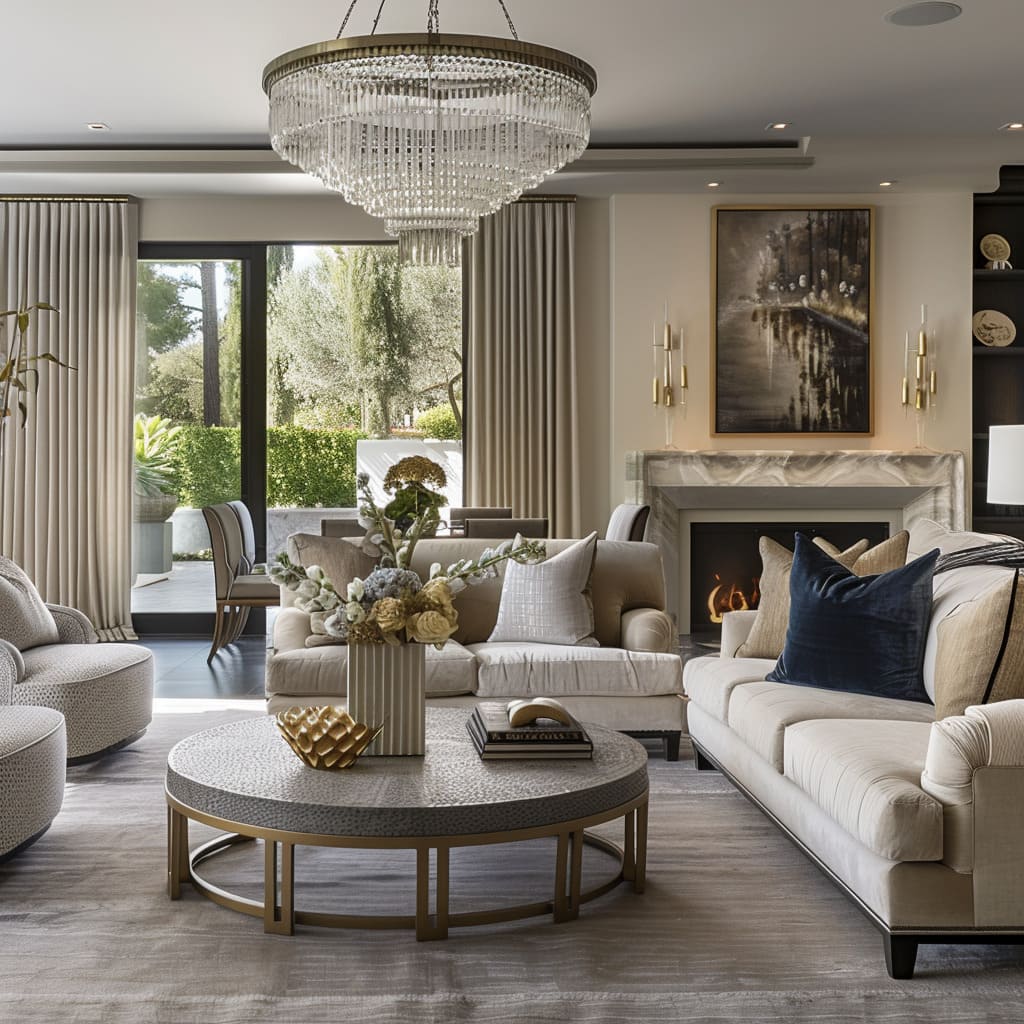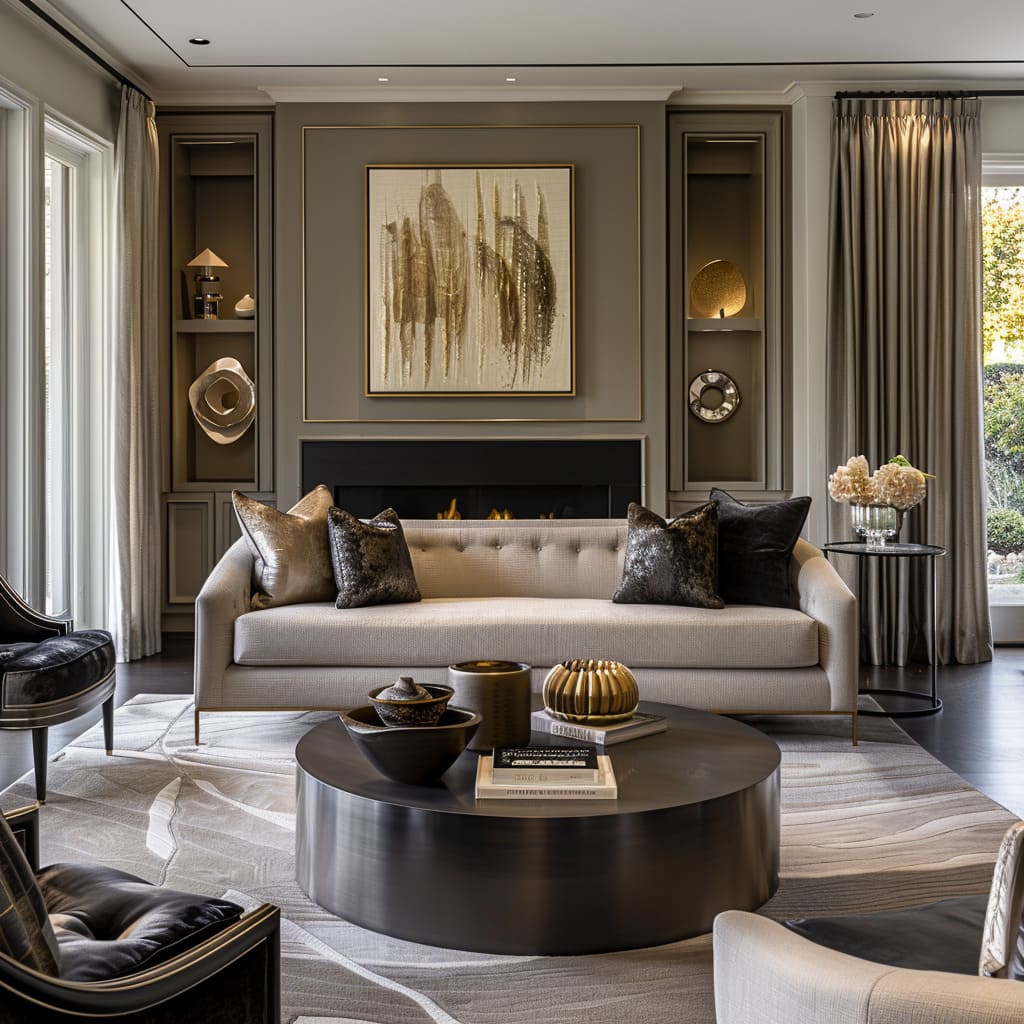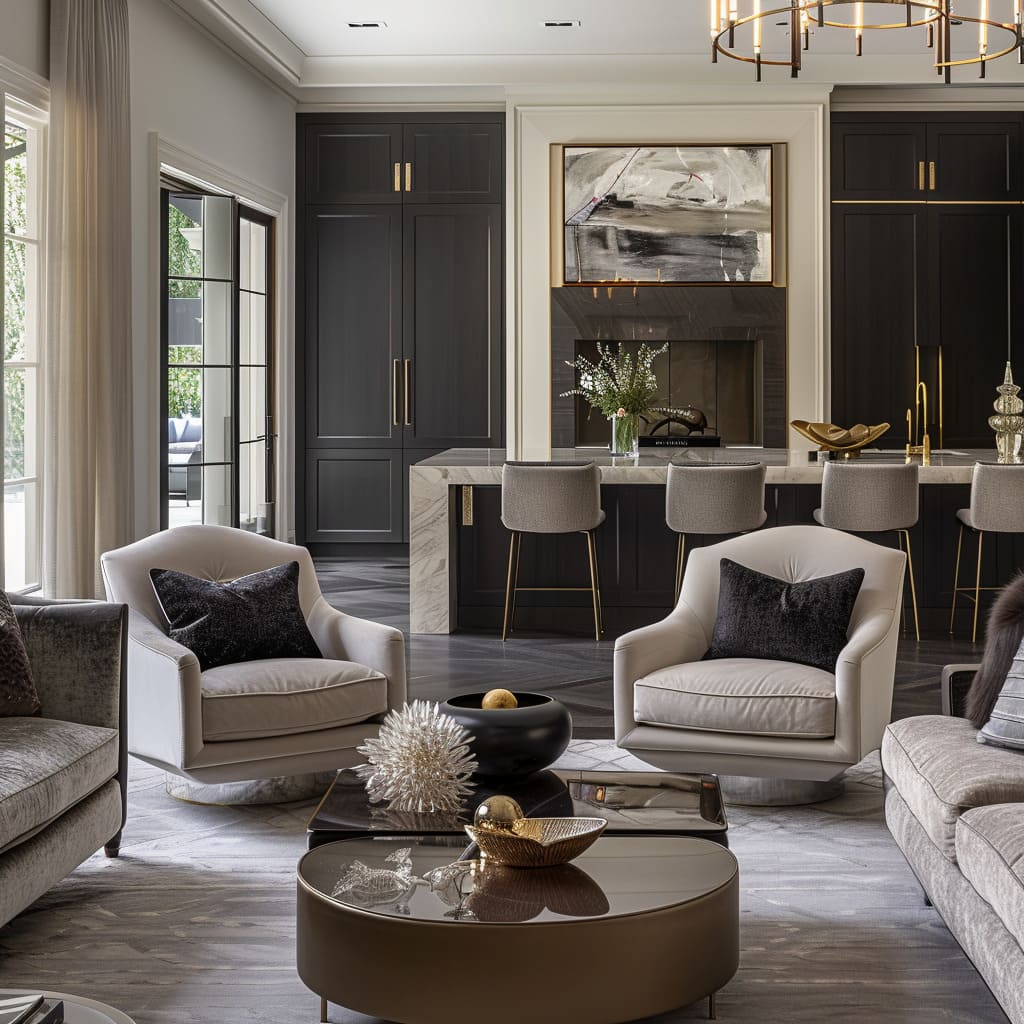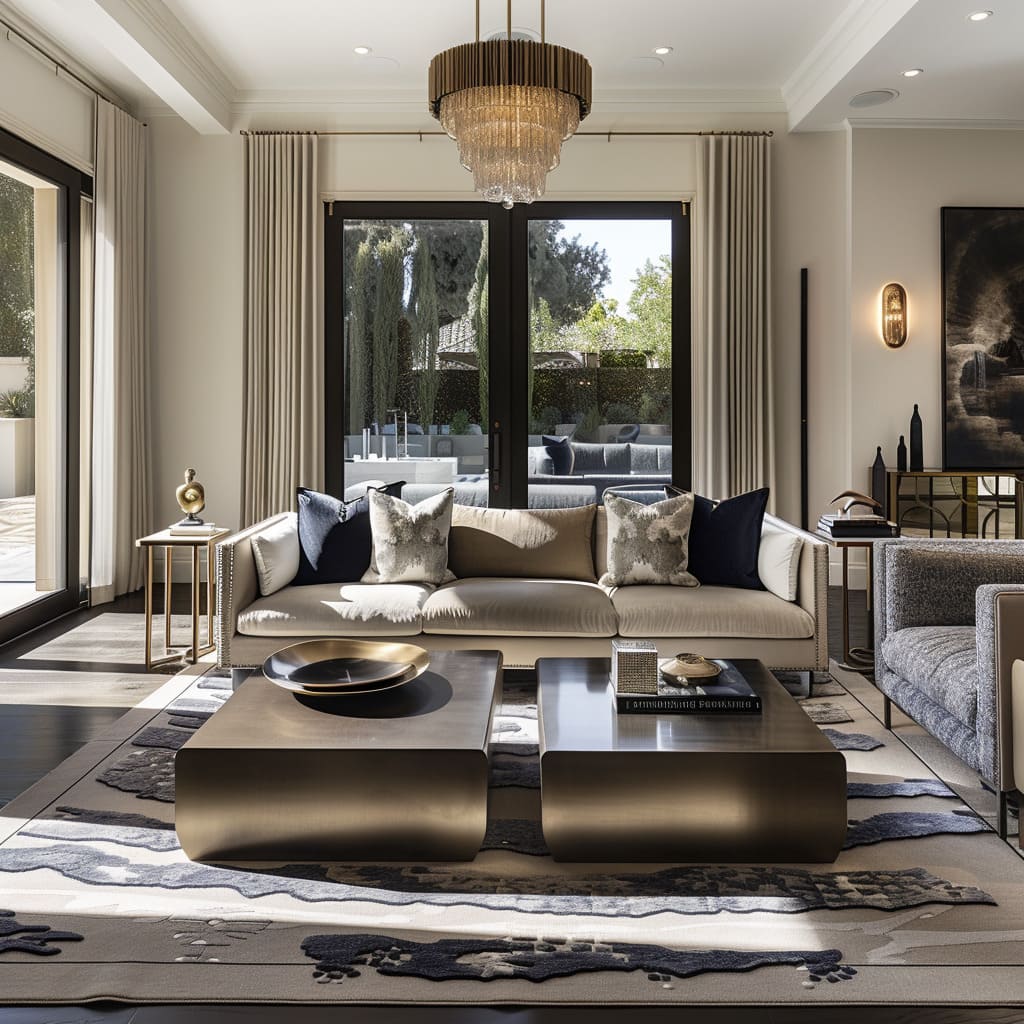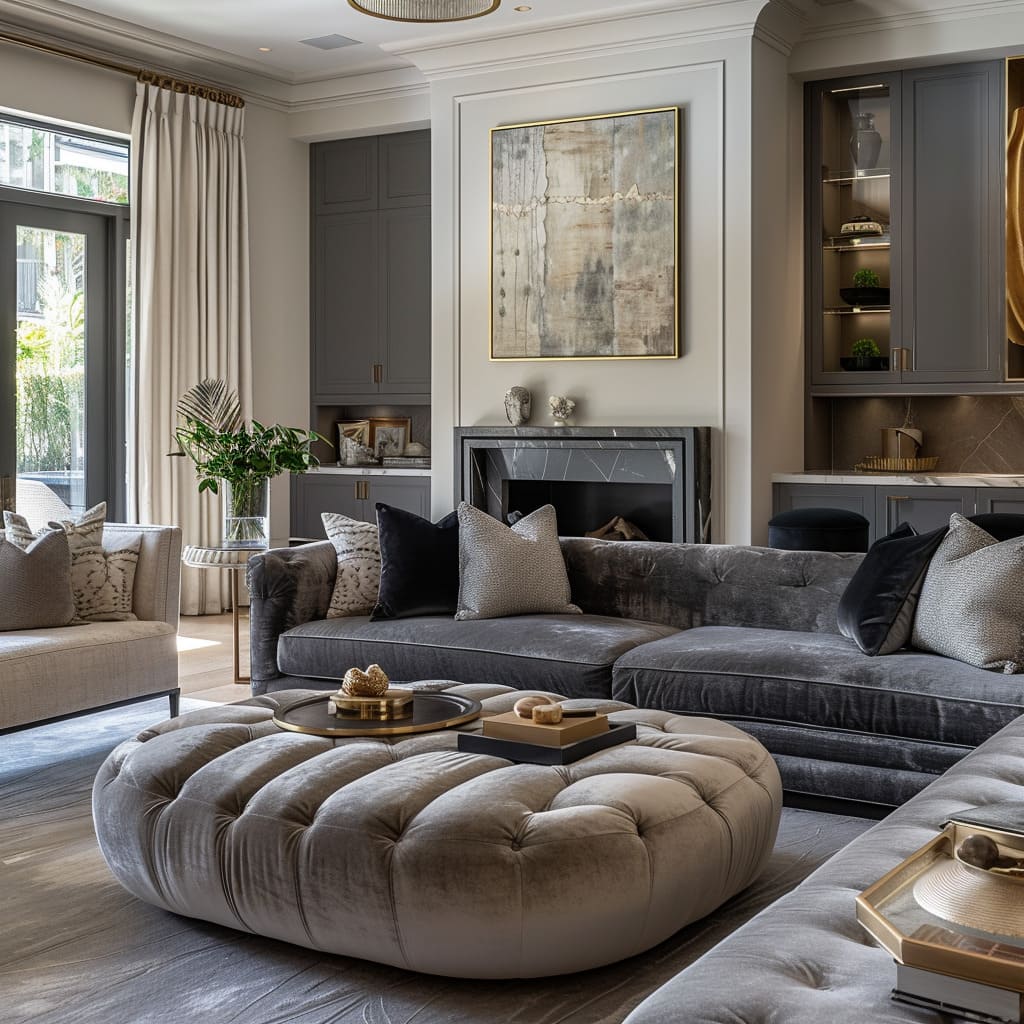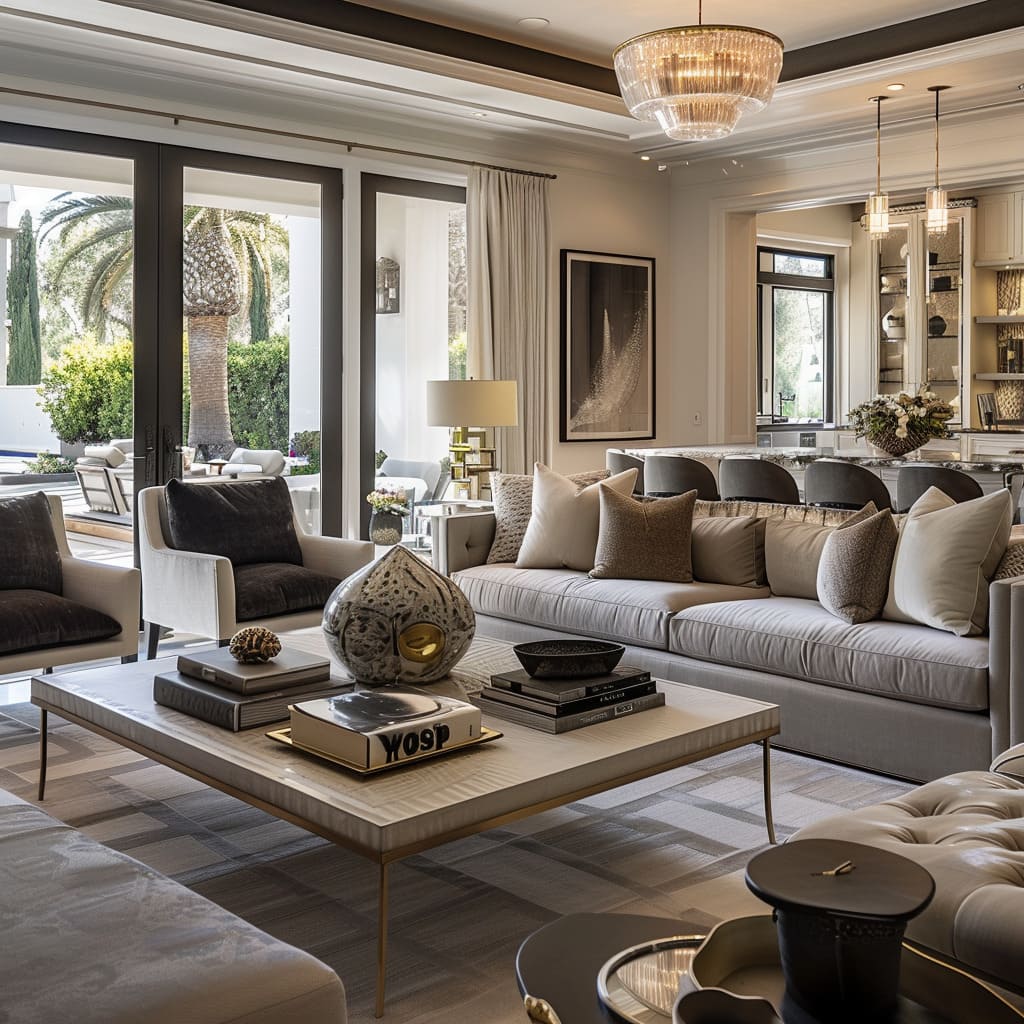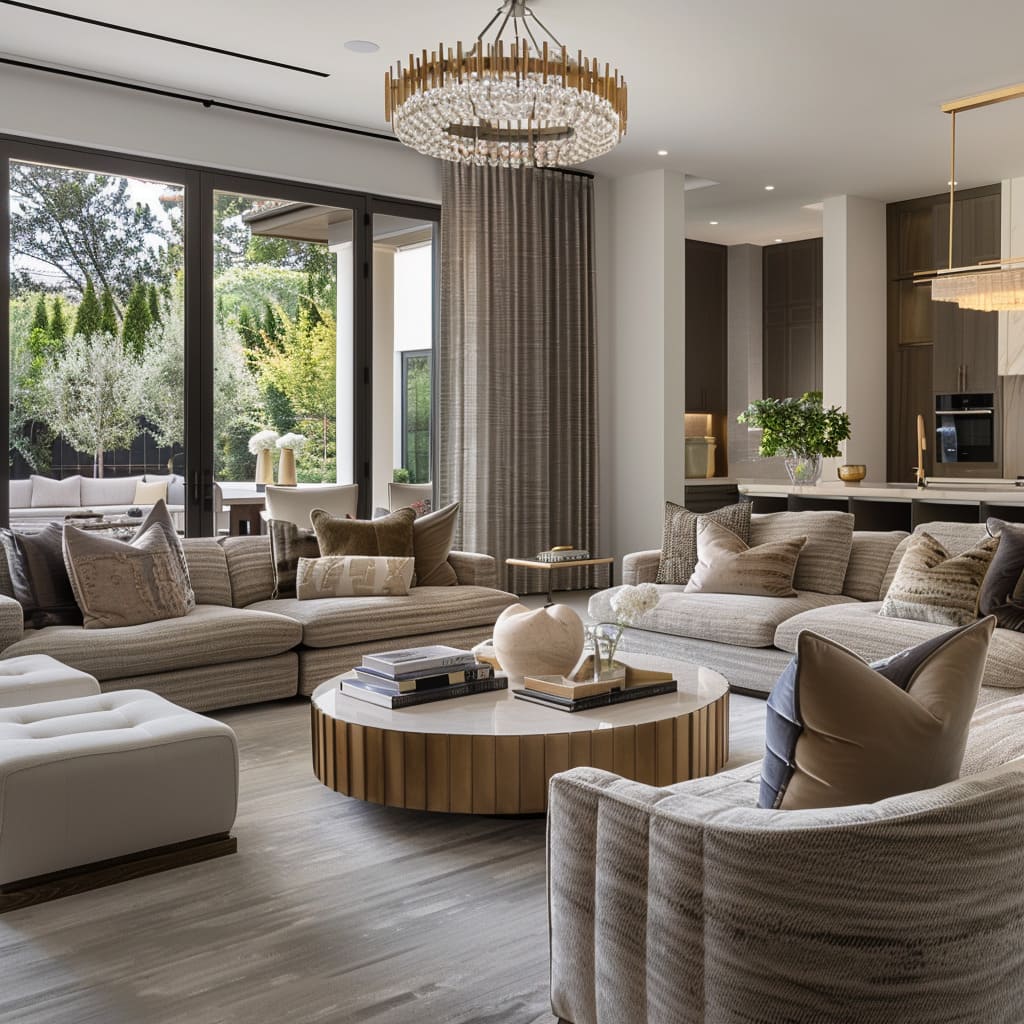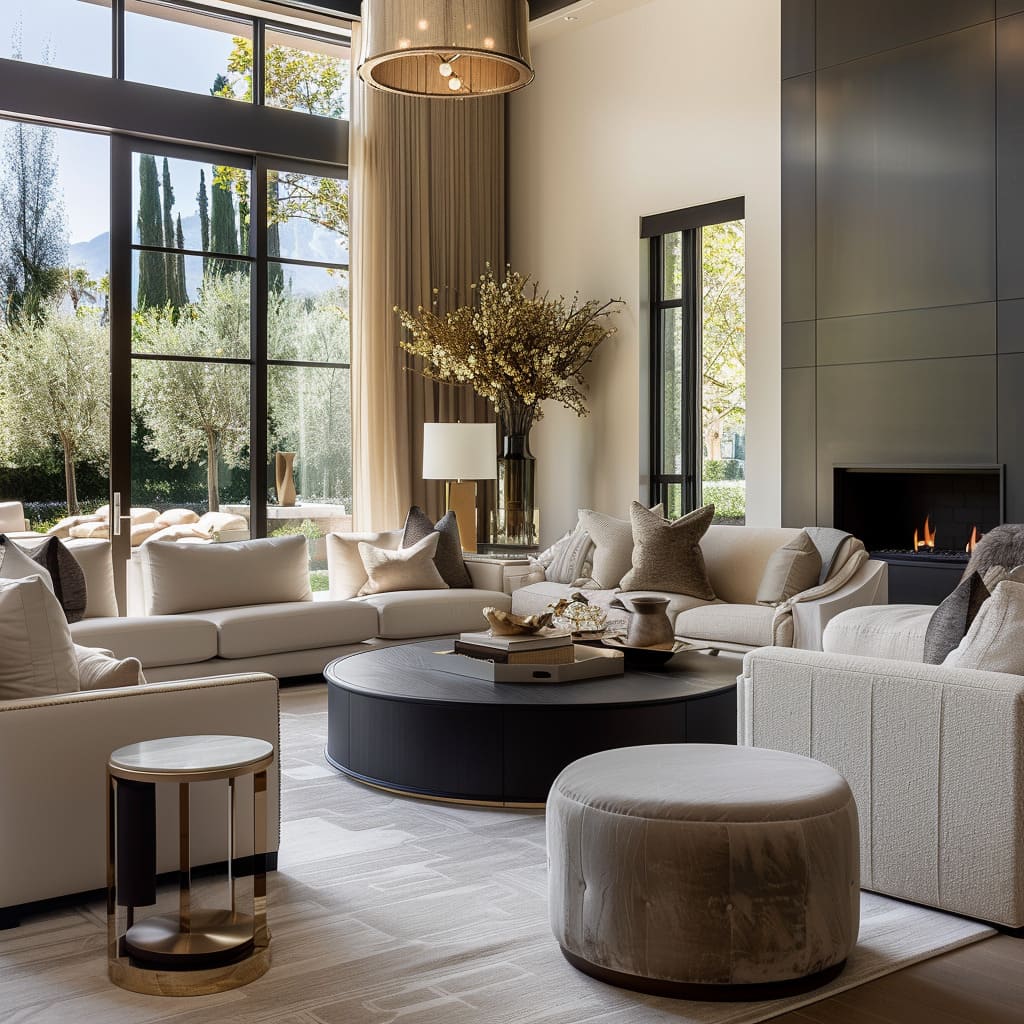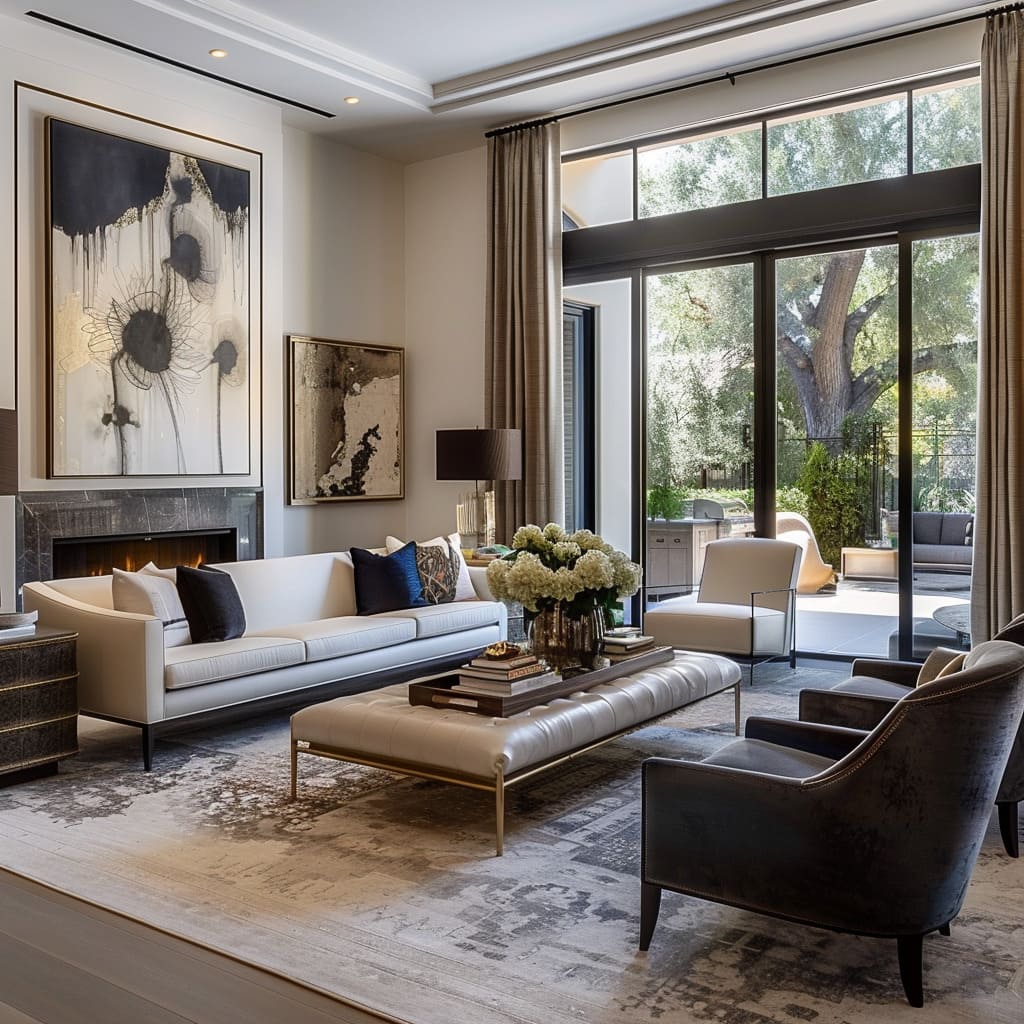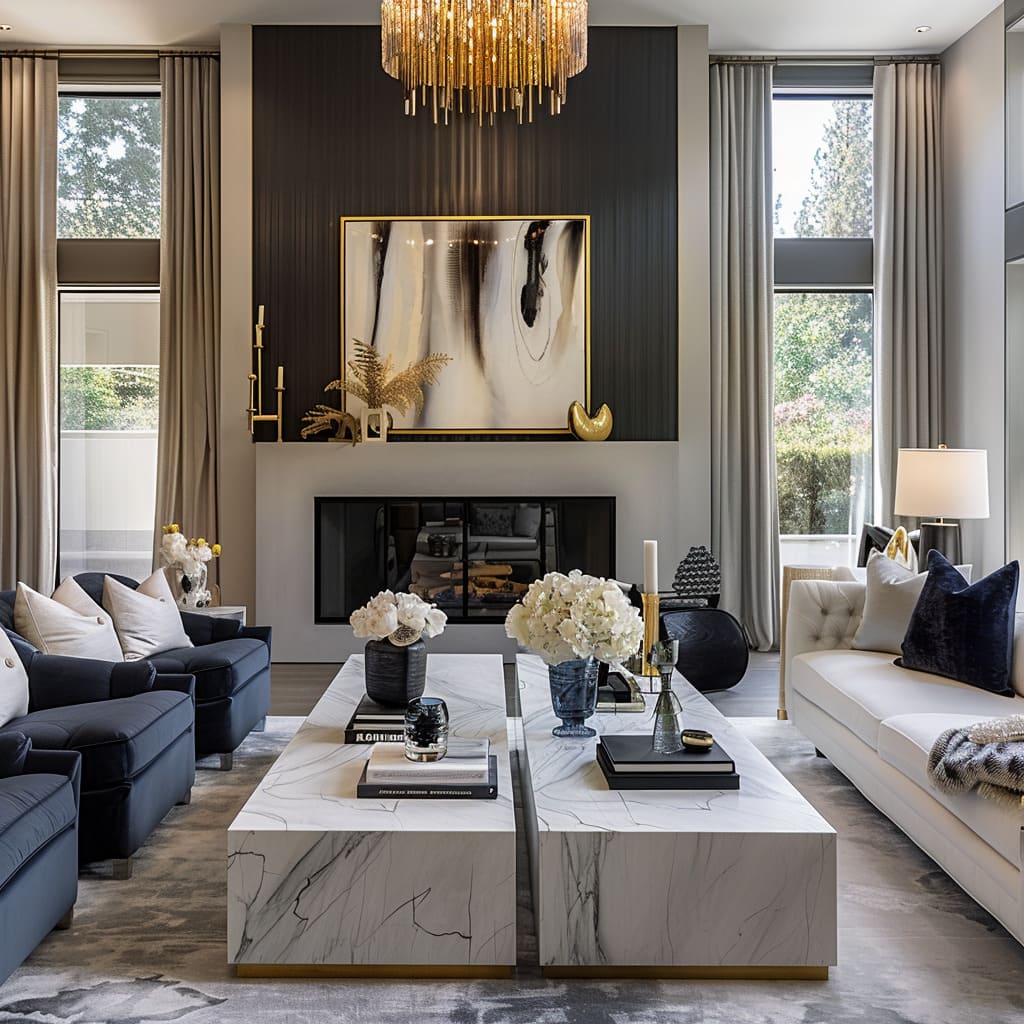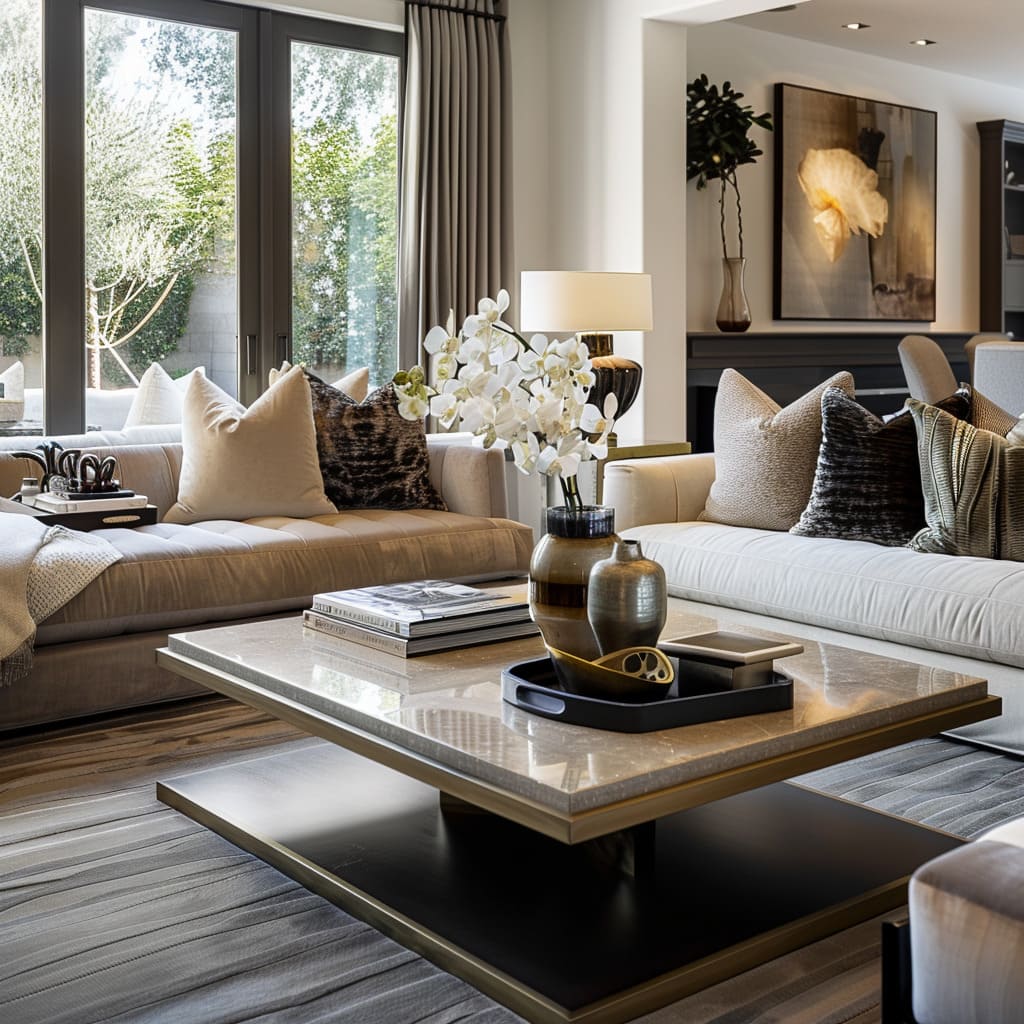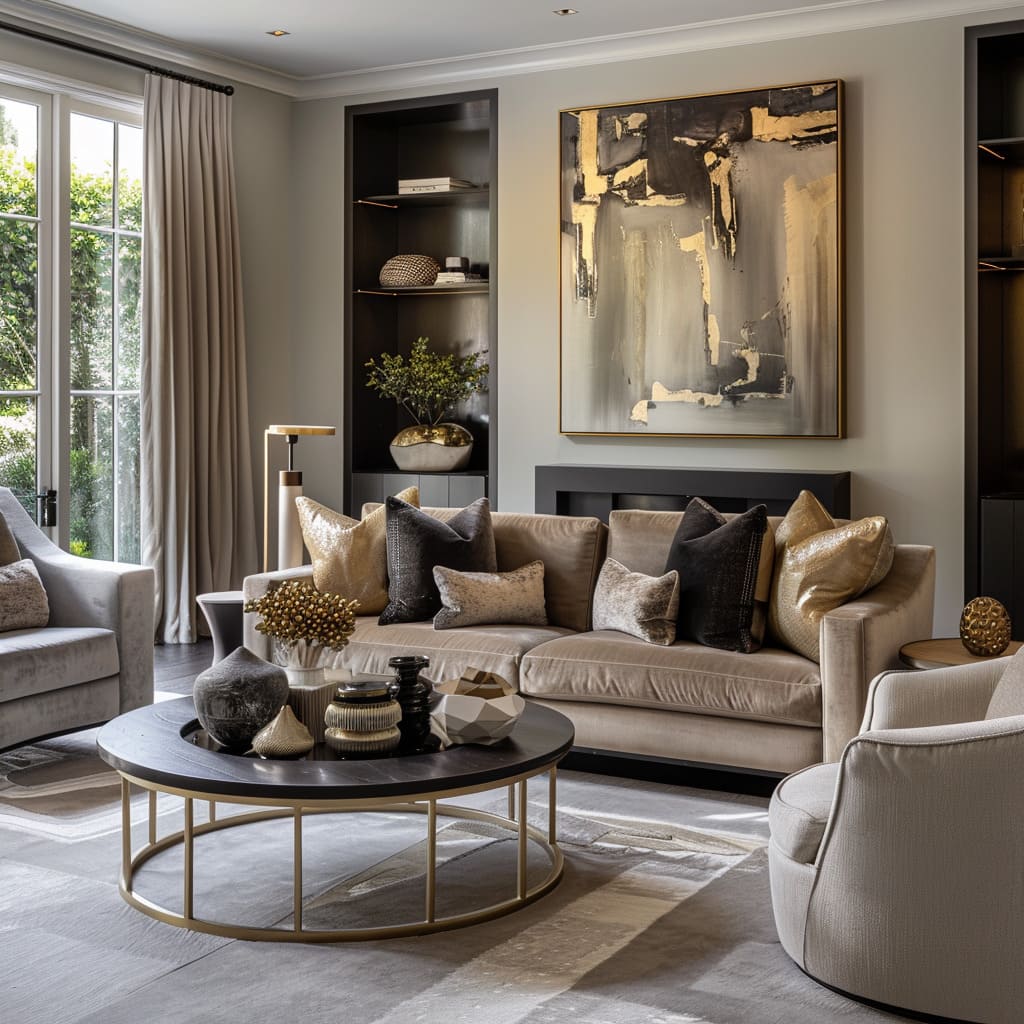Within the article, It is a testament to the art of interior design, where every stitch in fabric, every ray of light, and every silent shadow plays a crucial role in the symphony of a well-designed space. This narrative delves into the subtleties that transform houses into homes, spaces into sanctuaries, and rooms into reflections of ourselves.
As you step into this world, prepare to explore the essence of interior design, not as mere decoration but as a fundamental expression of human creativity and sophistication.
Visual Dynamics and Spatial Definition
In this section, we explore the strategies employed to craft a visual narrative within a space. By leveraging contrasts between light and dark, detailed mouldings, and the thoughtful use of glass and mirrors, designers create depth and expand the perceived boundaries of a room.
The goal is to craft an environment where every angle and vista is meticulously composed to enhance the visual experience.
Designers often opt for a calculated interplay between shadows and illumination to give rooms a sense of depth that goes beyond their physical dimensions. This technique allows for the creation of a subtle drama that shifts with the natural light throughout the day.The artful incorporation of mouldings, often with intricate designs, serves not just as a decorative border but as a defining boundary that highlights the transition between walls and ceilings.
It’s a classic touch that adds an air of sophistication and a whisper of historical influence to modern spaces.
Glass is used not merely for transparency, but as a medium to delicately demarcate different areas without the weight of solid barriers. Be it through glass-topped tables or floor-to-ceiling windows, the material contributes to a fluidity that makes the environment feel boundless and continuous.
Mirrors serve a dual purpose – they are functional and, at the same time, magical in their ability to alter perception. Placed opposite windows, they double the influx of daylight and views, while their placement above consoles or in empty passages can turn a void into a visually engaging passage.
Breaking down barriers between interior and exterior, window designs often extend from floor to ceiling, capturing snapshots of nature and inviting them indoors. They act as silent observers, holding the outside world in a fixed gaze and providing a living artwork that changes with the seasons.
Wall adornments such as paintings and pictures are selected with a nuanced approach to scale and subject matter, ensuring that each piece communicates with its surroundings, enhancing without overwhelming.
In terms of lighting, designers are choosing fixtures that mimic natural formations – clusters that resemble stars, or solitary sconces that echo the calm of a setting sun, contributing to the ambiance without dominating the conversation. Lastly, the strategic positioning of reflective surfaces can make intimate spaces feel grandiose.
A well-placed mirror not only adds light but can also reflect a carefully curated view, essentially painting a room with the colors and textures of its own furnishings.
Architectural Cohesion
Article readers will gain insights into how the seamless integration of architectural elements can lead to a harmonious and streamlined environment. This includes the use of straight, clean lines, recessed areas, and built-in lighting solutions that merge effortlessly with the structure of the space, establishing a refined and orderly ambiance.
The strategic emphasis on straight, clean lines within the architectural details fosters an environment that feels orderly and serene. This purposeful linear directionality directs the viewer’s gaze and lends a calmness to the space, offering an undercurrent of peace amidst modernity.
Wall paneling is more than a mere nod to tradition; it introduces depth and complexity to a room’s surfaces. Whether it’s a fine herringbone pattern or wide panels of smooth wood, these elements bring an additional layer of texture that invites the eye to linger and appreciate the subtle craftsmanship.
Recessed areas are carved out with precision, creating niches that serve both aesthetic and practical purposes. These pockets can be home to lighting, artwork, or display shelves, contributing to the room’s narrative without encroaching upon the flow of the space.
The integration of ceiling designs is an exercise in understated grandeur. Tray ceilings can offer an illusion of height and space, while recessed lighting can cast a gentle glow that accentuates the ceiling’s geometry, transforming it into a quiet statement of luxury.
The architectural lines serve not just as a structural necessity but as a canvas upon which light and shadow play throughout the day. The calculated use of angles ensures that, as the sun moves across the sky, the interior reveals a dynamic quality, subtly transforming with the shifting light.
Where wall meets floor, the baseboard becomes an opportunity for an additional layer of detail. Here, designers carefully choose the height and profile of baseboards to complement the room’s overall aesthetic, adding a finished look that ties the elements together.
Doors within the space are designed not only for utility but also as design features. Flush with the walls, they contribute to the sleek, uninterrupted look, often featuring handles that are works of art in their own right, combining functionality with visual appeal.
Furnishing and Comfort
Here we talk about the selection and arrangement of furnishings designed to offer comfort without sacrificing style. This section discusses how modern, durable furniture and strategically placed accessories contribute to a living space that invites relaxation while maintaining an uncluttered and sophisticated appearance.
The selection of furniture is a careful balance, emphasizing both the luxury of comfort and the assurance of longevity. Sofas and chairs are often chosen for their generous proportions and indulgent padding, inviting prolonged periods of relaxation while promising to retain their shape and elegance over time.
Accessories are curated with a keen eye for scale and purpose, ensuring that each item on display has room to breathe. This selective approach avoids visual clutter and allows each piece to make a more significant impact, whether it be through its color, texture, or unique design.
Modern fireplaces are chosen for their sleek profiles and their capacity to act as the room’s centerpiece. Often framed by bespoke cabinetry or flanked by art, these fireplaces combine the primal allure of flame with cutting-edge design, becoming a source of warmth and a central gathering point.
Modular elements in furniture and storage are a nod to flexibility and adaptation. These components allow for personalization of the space to suit changing needs, from entertainment systems that hide away when not in use, to shelving units that can be reconfigured as collections grow or tastes change.
Beyond seating, the furniture pieces are selected to serve multiple roles. Coffee tables and side tables are not just surfaces but statements in their craftsmanship and design, often with hidden drawers or shelves that maintain the streamlined look.
The soft furnishings, from the rugs underfoot to the throws and cushions, are an invitation to comfort, selected not just for their texture but also for their color harmony with the room. They serve to soften the spaces between furniture and flooring, creating a cohesive look that feels intentional and refined.
In the bedroom, the bed itself is an island of tranquility, with mattresses that offer superior support and linens that whisper against the skin. The headboards are often oversized, upholstered in lush fabrics that add a tactile dimension to the room’s sanctuary-like quality.
Storage solutions are deftly integrated into the living spaces, maintaining a seamless aesthetic while providing practicality. From the living room to the bedroom, storage is as much a part of the room’s style statement as it is a keeper of order, with cabinetry and closets designed to conceal their contents with a facade of sophistication.
Aesthetic Integration
This part of the article emphasizes the aesthetic elements that bring character and personalization to a space. From the careful selection of artworks and fabrics to the inclusion of technology that fits unobtrusively within the design, each detail is chosen to complement the overall aesthetic while fulfilling a functional need.
When selecting artwork, the scale is considered to ensure it anchors the space appropriately. These pieces are often conversational in nature, inviting contemplation and serving as a visual focal point that enriches the living experience without overwhelming the sensibilities of the space.
Technology within the space is chosen for its ability to merge with the surrounding design elements seamlessly. Televisions and sound systems are often built into custom cabinetry or cleverly concealed behind fine art, emerging only when summoned for use.
The fabrics chosen for upholstery, window dressings, and throw pillows offer a tactile experience that invites touch, contributing to the layered ambiance of the room. They range from the finest velvets to richly textured weaves, each selected to complement the other textures within the space.
Tablescapes are arranged with an artful consideration of both aesthetics and utility. Centerpieces are often low and sprawling, allowing for unobstructed views across the table, while tableware is a careful amalgamation of beauty and practicality, with each piece selected to add to the mealtime ritual.
In areas of rest, bedding is chosen to be as visually appealing as it is comfortable, with luxurious fabrics that promise a restful slumber. The coordination of bedding with room decor is precise, creating a cohesive color story that soothes the senses.
Floor coverings, whether they be area rugs or full carpeting, are chosen for their quality and their ability to define spaces. They provide a foundation upon which the room’s design is built, both grounding the furniture and adding a layer of warmth and sound insulation.
Within dining spaces, the chairs around the table are not only comfortable but visually intriguing, often carrying a design that complements the room’s larger aesthetic theme. The harmony between seating and tables creates a dining experience that is both cohesive and inviting.
The hardware on furniture and fixtures is carefully selected to echo the room’s design narrative, with knobs and handles often acting as the jewelry of the room, providing subtle accents that catch the eye and elevate the overall feel of the space.
Transitional Spaces and Textural Harmony
The focus here is on the creation of transitional spaces that exude grandeur and continuity. We discuss the significance of oversized doorways, expansive rugs, and monochromatic color schemes that are brought to life through a variety of textures, blending to create a cohesive and inviting space.
The design of transitional spaces such as doorways and hallways receives special attention, emphasizing a generous scale that enhances the overall sense of grandeur. These thresholds are more than mere passageways; they are integral parts of the design narrative, serving as spacious invitations from one area to the next.
Rugs play a significant role in defining areas within a larger space, particularly seating areas, where they anchor the arrangement of furniture. These expansive pieces are chosen for their texture and quality, contributing to the visual and physical warmth of the room.
Color schemes tend to favor a monochromatic palette, creating a subtle backdrop that allows textures and forms within the space to take center stage. This approach allows for a rich layering of materials and fabrics, each contributing to the overall tapestry of the design without competing for attention.
Finishes are thoughtfully applied to surfaces throughout the space, where matte and satin textures provide a counterpoint to elements with a glossier sheen. This interplay of finishes contributes to a sophisticated visual rhythm that engages the senses and highlights the craftsmanship of the materials.
In choosing textiles for window treatments and upholstery, designers pay close attention to the weave and weight of the fabrics, ensuring that they not only contribute to the room’s aesthetic but also to its acoustic quality, absorbing sound to create a hushed atmosphere. Custom carpentry, like built-in bookcases and cabinets, is often finished with a subtle luster, hinting at refinement without overwhelming the senses.
This careful application of finish ensures that the custom work complements the space rather than dominates it.
In the realm of soft furnishings, designers combine a variety of textures through throws, cushions, and curtains, each adding a layer of sophistication and comfort. The fabrics selected serve to create an inviting atmosphere that encourages relaxation and socialization.
Illumination and Detailing
Lighting plays a critical role in setting the mood of an interior. In this section, we’ll discuss how the right selection and placement of lighting can transform a space.
Additionally, we’ll look at how the careful detailing of window frames, sills, and other hardware contributes to the overall elegance of the home.
The integration of lighting into the very architecture of the space, such as built-in fixtures in ceilings and walls, achieves a look of sophistication that seems effortless. This approach ensures that the light sources are a deliberate part of the design rather than an afterthought, contributing to a well-considered aesthetic.
When selecting lighting fixtures, designers are choosing pieces that stand as works of art. From statement-making chandeliers to sculptural table lamps, these fixtures not only illuminate the space but also serve as captivating visual elements that enhance the space’s artistic expression.
The ambiance of a room is often dictated by its lighting, and soft, ambient illumination is key in creating a relaxed environment. Lamps with dimming capabilities and the strategic placement of light sources combine to envelop a room in a warm, inviting glow that encourages calm and comfort.
Window treatments play a crucial role, not only in how they manage the light but also in their design and structure. Sophisticated window frames and sills are more than just perimeters for glass; they are elements that echo the interior’s design language, crafted from materials that add depth and resonance to the space.
Lighting control systems are often subtly integrated, allowing inhabitants to adjust the mood of the space with the touch of a button. Such systems marry functionality with discretion, ensuring that the technology enhances the living experience without intruding upon it.
Detailing extends to the texture of the light itself. Fixtures with frosted or seeded glass can cast a diffuse light that softens the room’s contours, while clear glass can project a crisp clarity, underscoring the sharpness of the space’s design features.
In outdoor-facing rooms, natural light is harnessed through strategic window placement, but it is the quality of the artificial light after dusk that maintains the continuity of the space’s feel, mimicking the softness of daylight’s departure.
Narrative and Historical Context
An interior is more than just a collection of objects; it tells a story. This section reflects on how the careful curation of objects and the selection of certain finishes and placements contribute to the narrative of a space, suggesting a rich backdrop of history and personal identity.
Objects within a space are chosen not just for their visual appeal but for the stories they tell, weaving a narrative that is personal and rich with history. Furniture may include vintage pieces that bring with them the echoes of the past, while contemporary works hint at the storyline continuing into the future.
Decorative trays and boxes are not mere storage solutions but are selected for their ability to organize and present personal items in a manner that is both practical and visually appealing. These elements serve as vignettes within the room, providing a structured yet attractive display for curated collections.
The strategic placement of objects is designed to guide the eye, creating a visual hierarchy that subtly emphasizes certain elements over others. This not only orders the space but also dictates a path for the gaze, allowing the viewer to journey through the design narrative one piece at a time.
Cabinetry in the space is a testament to modern craftsmanship, where the use of hidden hinges and hardware ensures a seamless facade. This attention to detail supports the aesthetic of clean lines and uninterrupted surfaces, emphasizing the beauty of the materials and the forms they create.
Bookshelves in these spaces are often styled with intention, each tome and ornament deliberately positioned not just for ease of access but to tell a part of the owner’s story, whether it’s through a collection of classics or a series of travel memorabilia.
Textiles are chosen for their historical relevance as well as their aesthetic. Patterns that echo ancient motifs or fabrics that have been important in design history contribute to a space that feels anchored in time, offering both comfort and a sense of continuity.
Art is selected and placed to reflect not just the current tastes but also the lineage of style that has influenced the space. A modern abstract piece may hang in conversation with a traditional landscape, creating a bridge between different periods and styles.
In areas of work or study within the space, the objects speak to both function and narrative. Desk accessories are chosen for their ability to facilitate work while also serving as artifacts of personal relevance, perhaps a letter opener from a family estate or a desk set from a significant life event.
As we conclude our exploration of the manifold facets of interior design, we recognize that the creation of space is akin to the crafting of an intimate biography. Each chapter we’ve traversed in this article mirrors a component of life itself—dynamic, cohesive, comfortable, aesthetic, transitional, illuminated, and storied.
The rooms we have wandered through, the textures we have touched, and the spaces we have felt, all converge to narrate a unique tale of personal heritage and vision. This article, a mere glimpse into the complex world of design, is an invitation to observe, to reflect, and to appreciate the silent language of our surroundings—the language of interior design.


